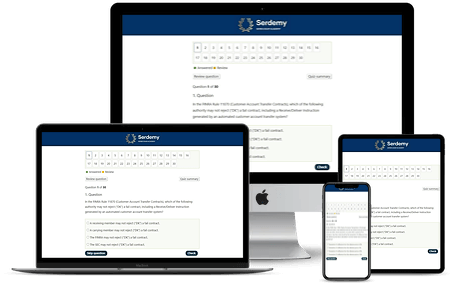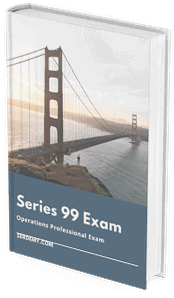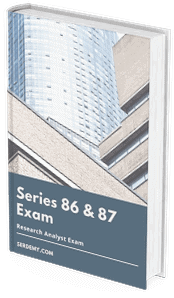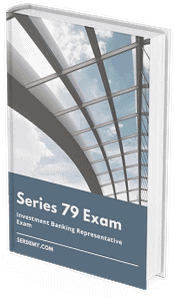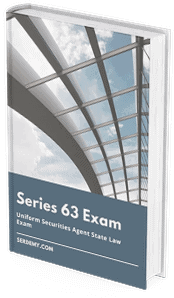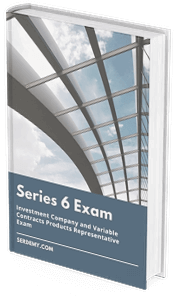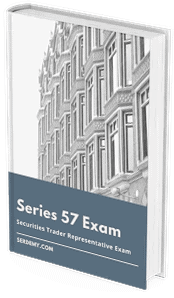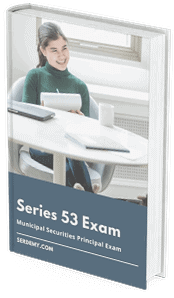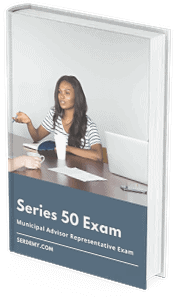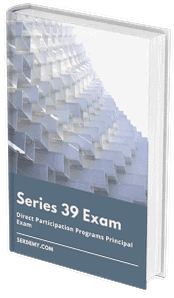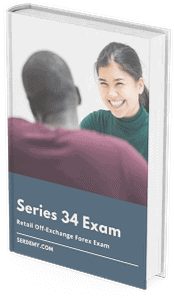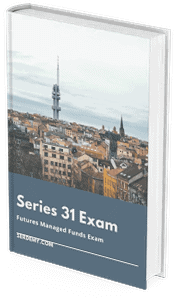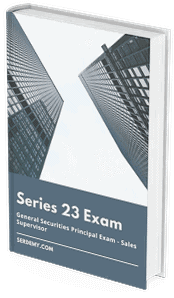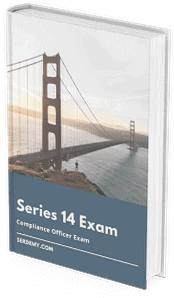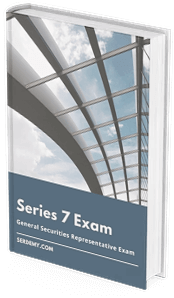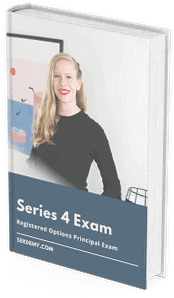Quiz-summary
0 of 30 questions completed
Questions:
- 1
- 2
- 3
- 4
- 5
- 6
- 7
- 8
- 9
- 10
- 11
- 12
- 13
- 14
- 15
- 16
- 17
- 18
- 19
- 20
- 21
- 22
- 23
- 24
- 25
- 26
- 27
- 28
- 29
- 30
Information
Premium Practice Questions
You have already completed the quiz before. Hence you can not start it again.
Quiz is loading...
You must sign in or sign up to start the quiz.
You have to finish following quiz, to start this quiz:
Results
0 of 30 questions answered correctly
Your time:
Time has elapsed
Categories
- Not categorized 0%
- 1
- 2
- 3
- 4
- 5
- 6
- 7
- 8
- 9
- 10
- 11
- 12
- 13
- 14
- 15
- 16
- 17
- 18
- 19
- 20
- 21
- 22
- 23
- 24
- 25
- 26
- 27
- 28
- 29
- 30
- Answered
- Review
-
Question 1 of 30
1. Question
Apex Securities, a multi-service broker-dealer, has its investment banking department advising a client on a confidential, hostile tender offer for Innovate Corp. In compliance with internal policies, Apex has established robust information barriers between its investment banking and proprietary trading departments. A proprietary trader at Apex, Kaelen, who is unaware of the pending tender offer, conducts independent quantitative analysis and concludes that Innovate Corp. is a prime acquisition target. Based solely on this research, Kaelen initiates a significant purchase of Innovate Corp. stock for the firm’s account. One week later, the tender offer is publicly announced. As the Chief Compliance Officer, your assessment of Kaelen’s trading activity under SEC Rule 14e-3 should conclude that:
Correct
The determination of a violation under SEC Rule 14e-3 in this scenario requires a two-part analysis focusing on the rule’s safe harbor provision for multi-service financial institutions. First, one must identify the primary prohibition. Rule 14e-3(a) generally prohibits any person who possesses material, nonpublic information about a tender offer from trading in the target company’s securities. Since the M&A department of the firm possessed such information, a trade by the firm’s proprietary desk creates a potential violation. The second and determinative part of the analysis is the application of the safe harbor provided in Rule 14e-3(b). This exception allows a firm to avoid liability if it can demonstrate two critical elements. The first element is that the individual making the investment decision, in this case the proprietary trader, did not know the material, nonpublic information. The second element is that the firm had implemented reasonable policies and procedures, such as information barriers or Chinese Walls, to ensure that individuals making investment decisions do not have access to such information. In the given situation, the proprietary trader’s decision was based on independent research, satisfying the first element. The firm also had established information barriers, satisfying the second element. Therefore, because both conditions of the Rule 14e-3(b) safe harbor are met, the firm’s trade does not constitute a violation. The effectiveness of the information barrier is the key to this exception.
Incorrect
The determination of a violation under SEC Rule 14e-3 in this scenario requires a two-part analysis focusing on the rule’s safe harbor provision for multi-service financial institutions. First, one must identify the primary prohibition. Rule 14e-3(a) generally prohibits any person who possesses material, nonpublic information about a tender offer from trading in the target company’s securities. Since the M&A department of the firm possessed such information, a trade by the firm’s proprietary desk creates a potential violation. The second and determinative part of the analysis is the application of the safe harbor provided in Rule 14e-3(b). This exception allows a firm to avoid liability if it can demonstrate two critical elements. The first element is that the individual making the investment decision, in this case the proprietary trader, did not know the material, nonpublic information. The second element is that the firm had implemented reasonable policies and procedures, such as information barriers or Chinese Walls, to ensure that individuals making investment decisions do not have access to such information. In the given situation, the proprietary trader’s decision was based on independent research, satisfying the first element. The firm also had established information barriers, satisfying the second element. Therefore, because both conditions of the Rule 14e-3(b) safe harbor are met, the firm’s trade does not constitute a violation. The effectiveness of the information barrier is the key to this exception.
-
Question 2 of 30
2. Question
An assessment of the trading procedures at a mid-tier broker-dealer, Crestview Partners, reveals a specific operational sequence. Crestview receives a large, not-held limit order from a pension fund to purchase 200,000 shares of a NASDAQ-listed security. Crestview’s standard institutional client agreement includes a written disclosure, to which the pension fund has consented, stating that the firm may trade for its own account at prices that could be the same as or better than the client’s unexecuted order. The trader handling the pension fund’s order communicates the order’s details to the firm’s head trader, who also oversees the proprietary trading desk. Shortly after, the proprietary desk identifies an opportunity to purchase 10,000 shares for the firm’s account at a price that is at the client’s limit price. Under FINRA rules, what is the most critical factor for Crestview’s Chief Compliance Officer to consider in determining whether the proprietary trade is permissible?
Correct
The core issue involves the application of FINRA Rule 5320, which prohibits a member from trading a security for its own account while in possession of an unexecuted customer order for that same security. This is commonly known as the prohibition on trading ahead of a customer order or the Manning Rule. However, the rule provides specific exceptions. One significant exception is for orders from institutional accounts, as defined in FINRA Rule 4512(c). If the customer is an institutional account, the firm may trade for its proprietary account provided two conditions are met: first, the firm must provide clear written disclosure to the institutional customer that it may trade for its own account at prices that could be the same as or better than the customer’s order, and second, the institutional customer must have provided consent. In the described scenario, the client is a pension fund, which qualifies as an institutional account, and the firm has the required disclosure and consent in its client agreement. Furthermore, knowledge of the order has been shared between the institutional desk and the head trader who oversees the proprietary desk, making an information barrier defense inapplicable. Therefore, the firm appears to meet the conditions for the institutional account exception to Rule 5320. However, compliance does not end there. A firm’s ability to rely on an exception to one rule does not absolve it from its other fundamental obligations. The most critical of these is the duty of best execution under FINRA Rule 5310. This rule requires a firm to use reasonable diligence to ascertain the best market for a security and buy or sell in such a market so that the resultant price to the customer is as favorable as possible under prevailing market conditions. Even with the customer’s consent to trade ahead, the firm cannot allow its proprietary trading to harm the execution quality of the customer’s order. A proprietary trade, even a small one, could absorb liquidity or adversely affect the market price, making it more difficult or expensive for the firm to fill the large institutional order. Therefore, the ultimate determining factor is whether the proprietary trade would compromise the firm’s ability to fulfill its overarching duty of best execution for the client’s entire order.
Incorrect
The core issue involves the application of FINRA Rule 5320, which prohibits a member from trading a security for its own account while in possession of an unexecuted customer order for that same security. This is commonly known as the prohibition on trading ahead of a customer order or the Manning Rule. However, the rule provides specific exceptions. One significant exception is for orders from institutional accounts, as defined in FINRA Rule 4512(c). If the customer is an institutional account, the firm may trade for its proprietary account provided two conditions are met: first, the firm must provide clear written disclosure to the institutional customer that it may trade for its own account at prices that could be the same as or better than the customer’s order, and second, the institutional customer must have provided consent. In the described scenario, the client is a pension fund, which qualifies as an institutional account, and the firm has the required disclosure and consent in its client agreement. Furthermore, knowledge of the order has been shared between the institutional desk and the head trader who oversees the proprietary desk, making an information barrier defense inapplicable. Therefore, the firm appears to meet the conditions for the institutional account exception to Rule 5320. However, compliance does not end there. A firm’s ability to rely on an exception to one rule does not absolve it from its other fundamental obligations. The most critical of these is the duty of best execution under FINRA Rule 5310. This rule requires a firm to use reasonable diligence to ascertain the best market for a security and buy or sell in such a market so that the resultant price to the customer is as favorable as possible under prevailing market conditions. Even with the customer’s consent to trade ahead, the firm cannot allow its proprietary trading to harm the execution quality of the customer’s order. A proprietary trade, even a small one, could absorb liquidity or adversely affect the market price, making it more difficult or expensive for the firm to fill the large institutional order. Therefore, the ultimate determining factor is whether the proprietary trade would compromise the firm’s ability to fulfill its overarching duty of best execution for the client’s entire order.
-
Question 3 of 30
3. Question
Lena, the Chief Compliance Officer at Apex Securities, is conducting a supervisory review of proprietary trading activity. She discovers that David, a trader on the firm’s proprietary desk, executed a series of large, un-hedged purchase orders for the stock of BioGenix Innovations (BGI) near the market close. Lena is aware that the firm’s research department is scheduled to release a “Strong Buy” upgrade on BGI in the next 48 hours. The firm’s written supervisory procedures and information barriers are designed to prevent the flow of information between research and trading. Given this discovery, which of the following actions represents the most critical and appropriate immediate response for Lena to take in accordance with her supervisory obligations?
Correct
Logical Deduction to Final Answer: 1. Identify the primary regulatory issue: A proprietary trader has executed large trades in a security just before the firm is set to release a material research report on that same security. This strongly suggests a violation of FINRA Rule 5280, which prohibits members from purposefully establishing, increasing, decreasing, or liquidating an inventory position in a security or a derivative of that security in anticipation of the issuance of a research report in that same security. 2. Determine the required supervisory response: Under FINRA Rule 3110 (Supervision), a firm must have supervisory procedures reasonably designed to achieve compliance with securities laws and regulations. Discovering a potential violation of Rule 5280 triggers this supervisory duty. 3. Evaluate the immediacy and nature of the response: The potential violation is serious as it involves trading on non-public information and could be considered manipulative. The most critical immediate action is not to make a regulatory filing or to manipulate the position further, but to contain the situation and ascertain the facts. 4. Synthesize the appropriate actions: The Compliance Officer must launch an internal investigation to determine if the trader had access to the report and the basis for the trades. This involves reviewing communications, interviewing the parties involved (the trader and the analyst), and reviewing information barrier logs. Concurrently, to prevent further potential violations or exacerbation of the issue, the firm should place restrictions on the trader’s activities and the firm’s proprietary position in the specific security until the investigation is complete. This combination of investigation and containment is the most comprehensive and appropriate initial response. The discovery of trading activity that appears to front-run a pending research report is a significant regulatory red flag. FINRA Rule 5280 specifically addresses this conduct, prohibiting firms from trading for their own accounts based on advance knowledge of the content or timing of a research report. This rule is designed to prevent firms from profiting from non-public information that they themselves are about to create and disseminate. When a Compliance Officer identifies such activity, their primary responsibility under the broad framework of FINRA Rule 3110 (Supervision) is to take prompt and effective action. A critical first step is to launch a thorough internal investigation. This investigation must determine the facts, including how the trader came to place the trades and whether there was a breach of the firm’s information barriers, which are required by rules like Section 15(f) of the Securities Exchange Act of 1934. While the investigation is pending, it is a prudent supervisory measure to place immediate restrictions on the involved trader’s activities and to freeze the firm’s position in the security in question. This prevents any further trading that could compound the violation or be perceived as an attempt to manipulate the market or conceal the original activity. Simply reporting to a regulator before confirming the facts through an internal review would be premature, while actions like liquidating the position could constitute a separate violation.
Incorrect
Logical Deduction to Final Answer: 1. Identify the primary regulatory issue: A proprietary trader has executed large trades in a security just before the firm is set to release a material research report on that same security. This strongly suggests a violation of FINRA Rule 5280, which prohibits members from purposefully establishing, increasing, decreasing, or liquidating an inventory position in a security or a derivative of that security in anticipation of the issuance of a research report in that same security. 2. Determine the required supervisory response: Under FINRA Rule 3110 (Supervision), a firm must have supervisory procedures reasonably designed to achieve compliance with securities laws and regulations. Discovering a potential violation of Rule 5280 triggers this supervisory duty. 3. Evaluate the immediacy and nature of the response: The potential violation is serious as it involves trading on non-public information and could be considered manipulative. The most critical immediate action is not to make a regulatory filing or to manipulate the position further, but to contain the situation and ascertain the facts. 4. Synthesize the appropriate actions: The Compliance Officer must launch an internal investigation to determine if the trader had access to the report and the basis for the trades. This involves reviewing communications, interviewing the parties involved (the trader and the analyst), and reviewing information barrier logs. Concurrently, to prevent further potential violations or exacerbation of the issue, the firm should place restrictions on the trader’s activities and the firm’s proprietary position in the specific security until the investigation is complete. This combination of investigation and containment is the most comprehensive and appropriate initial response. The discovery of trading activity that appears to front-run a pending research report is a significant regulatory red flag. FINRA Rule 5280 specifically addresses this conduct, prohibiting firms from trading for their own accounts based on advance knowledge of the content or timing of a research report. This rule is designed to prevent firms from profiting from non-public information that they themselves are about to create and disseminate. When a Compliance Officer identifies such activity, their primary responsibility under the broad framework of FINRA Rule 3110 (Supervision) is to take prompt and effective action. A critical first step is to launch a thorough internal investigation. This investigation must determine the facts, including how the trader came to place the trades and whether there was a breach of the firm’s information barriers, which are required by rules like Section 15(f) of the Securities Exchange Act of 1934. While the investigation is pending, it is a prudent supervisory measure to place immediate restrictions on the involved trader’s activities and to freeze the firm’s position in the security in question. This prevents any further trading that could compound the violation or be perceived as an attempt to manipulate the market or conceal the original activity. Simply reporting to a regulator before confirming the facts through an internal review would be premature, while actions like liquidating the position could constitute a separate violation.
-
Question 4 of 30
4. Question
An assessment of trading patterns at Apex Securities, a FINRA member firm, reveals a specific sequence of events. Lena, the Chief Compliance Officer, is reviewing the activity of Marcus, a trader on the institutional desk. The review shows that at 10:00 AM, an institutional client placed a “not held” market order with Marcus to purchase 150,000 shares of Inova Corp. (INOV), which was then quoted at $50.05 bid / $50.10 ask. At 10:02 AM, before taking any action on the client’s order, the firm’s proprietary trading account, which Marcus also oversees, purchased 20,000 shares of INOV at the ask price of $50.10. At 10:04 AM, Marcus began executing the client’s order, with the initial fills occurring at $50.12. Later that day, the firm’s proprietary account sold its 20,000 shares at an average price of $50.18. Which of the following represents the most significant regulatory failure that Lena should identify and address?
Correct
The central issue revolves around FINRA Rule 5320, which prohibits a member firm that accepts a customer order for an equity security from trading that security on the same side of the market for its own account at a price that would satisfy the customer’s order, unless it immediately thereafter executes the customer’s order up to the size and at the same or better price than it traded for its own account. In this scenario, the firm received a large buy order from an institutional client. The order was “not held,” which grants the trader discretion as to the time and price of execution. However, this discretion does not override the fundamental obligation to not disadvantage the client for the firm’s own benefit. Before beginning to work the client’s order, the firm’s proprietary desk purchased shares for its own account at $50.10. Subsequently, the firm began filling the client’s order at a less favorable price of $50.12. This action directly constitutes trading ahead. The firm used its knowledge of the large, impending customer buy order to enter a proprietary trade at a better price, potentially causing the price to rise before the client’s execution. The discretion of a “not held” order is meant to allow the trader to seek best execution for the client, not to create a window for the firm to profit at the client’s expense. This conduct is a direct violation of FINRA Rule 5320 and also implicates the duty of best execution under FINRA Rule 5310 and standards of commercial honor under FINRA Rule 2010. The primary and most direct violation is trading ahead of a customer order.
Incorrect
The central issue revolves around FINRA Rule 5320, which prohibits a member firm that accepts a customer order for an equity security from trading that security on the same side of the market for its own account at a price that would satisfy the customer’s order, unless it immediately thereafter executes the customer’s order up to the size and at the same or better price than it traded for its own account. In this scenario, the firm received a large buy order from an institutional client. The order was “not held,” which grants the trader discretion as to the time and price of execution. However, this discretion does not override the fundamental obligation to not disadvantage the client for the firm’s own benefit. Before beginning to work the client’s order, the firm’s proprietary desk purchased shares for its own account at $50.10. Subsequently, the firm began filling the client’s order at a less favorable price of $50.12. This action directly constitutes trading ahead. The firm used its knowledge of the large, impending customer buy order to enter a proprietary trade at a better price, potentially causing the price to rise before the client’s execution. The discretion of a “not held” order is meant to allow the trader to seek best execution for the client, not to create a window for the firm to profit at the client’s expense. This conduct is a direct violation of FINRA Rule 5320 and also implicates the duty of best execution under FINRA Rule 5310 and standards of commercial honor under FINRA Rule 2010. The primary and most direct violation is trading ahead of a customer order.
-
Question 5 of 30
5. Question
Lena, the Chief Compliance Officer at Apex Trading, is reviewing the firm’s proprietary trading activity. She flags a transaction where Marco, a trader on the firm’s equity desk, purchased 5,000 shares of XYZ Corp for the firm’s proprietary account at a price of $25.48. At the time of this trade, Apex was holding a not-held limit order from Quantum Pension Fund, an institutional client, to buy 50,000 shares of XYZ at $25.50 or lower. Lena confirms that Quantum’s account opening documents include a clause, which the client agreed to, that explicitly waives the protections afforded under FINRA’s limit order protection rule for any of its orders that meet the rule’s size and value thresholds for the institutional order exception. What is the most accurate assessment of Marco’s proprietary trade in this context?
Correct
The proprietary trade executed by the firm was permissible under FINRA Rule 5320. The core principle of this rule, often called the limit order protection rule, is to prohibit a member firm from trading a security for its own account at a price that would satisfy a customer’s held, unexecuted limit order. If a firm does trade for its own account under such conditions, it must immediately execute the customer’s limit order for at least the same number of shares and at the same or a better price than it gave itself. However, the rule contains several important exceptions. One key exception applies to orders from institutional accounts. An institutional account is generally defined as a bank, savings and loan association, insurance company, registered investment company, registered investment adviser, or any other entity with total assets of at least $50 million. For this exception to apply, the customer’s order must be for 10,000 shares or more and have a value of at least $100,000. Crucially, the rule allows such institutional customers to affirmatively opt out of the protections of Rule 5320, either on an order-by-order basis or through a written agreement. In the described scenario, the customer is an institutional pension fund, and its order for 50,000 shares with a value well over $100,000 clearly meets the size and value thresholds. The most critical fact is that the fund had a pre-existing agreement in its account documentation to waive the protections of the rule for its large orders. Because this affirmative waiver was in place, the firm was not obligated to pass along the better price of its proprietary trade to the customer’s limit order. Therefore, the firm’s proprietary trade did not constitute a violation of FINRA Rule 5320.
Incorrect
The proprietary trade executed by the firm was permissible under FINRA Rule 5320. The core principle of this rule, often called the limit order protection rule, is to prohibit a member firm from trading a security for its own account at a price that would satisfy a customer’s held, unexecuted limit order. If a firm does trade for its own account under such conditions, it must immediately execute the customer’s limit order for at least the same number of shares and at the same or a better price than it gave itself. However, the rule contains several important exceptions. One key exception applies to orders from institutional accounts. An institutional account is generally defined as a bank, savings and loan association, insurance company, registered investment company, registered investment adviser, or any other entity with total assets of at least $50 million. For this exception to apply, the customer’s order must be for 10,000 shares or more and have a value of at least $100,000. Crucially, the rule allows such institutional customers to affirmatively opt out of the protections of Rule 5320, either on an order-by-order basis or through a written agreement. In the described scenario, the customer is an institutional pension fund, and its order for 50,000 shares with a value well over $100,000 clearly meets the size and value thresholds. The most critical fact is that the fund had a pre-existing agreement in its account documentation to waive the protections of the rule for its large orders. Because this affirmative waiver was in place, the firm was not obligated to pass along the better price of its proprietary trade to the customer’s limit order. Therefore, the firm’s proprietary trade did not constitute a violation of FINRA Rule 5320.
-
Question 6 of 30
6. Question
Assessment of a mid-sized broker-dealer’s compliance framework reveals a critical deficiency two days before the CEO is scheduled to execute the annual certification required by FINRA Rule 3130. The Chief Compliance Officer, Anika, confirms that the firm’s automated surveillance system for detecting potential insider trading has been non-functional for over a month due to a software integration failure. While a plan for remediation has been approved, the fix has not yet been implemented. Anika must advise the CEO on the appropriate course of action. Which recommendation aligns with the obligations under FINRA Rule 3130?
Correct
The logical deduction for the correct course of action is based on the stringent requirements of FINRA Rule 3130. The rule mandates that the firm’s Chief Executive Officer or an equivalent officer must certify annually that the firm has in place processes to establish, maintain, review, test, and modify written compliance policies and supervisory procedures reasonably designed to achieve compliance with applicable FINRA rules, MSRB rules, and federal securities laws. This certification is an absolute attestation and cannot be qualified, conditional, or subject to exceptions. Signing the certification while being aware of a material, un-remediated deficiency in a required supervisory system would constitute a false certification, which is a serious violation. The discovery of the non-functional surveillance system represents a critical failure in the firm’s supervisory processes. The fact that a remediation plan exists does not negate the current failure. Therefore, the only compliant action is to address the failure first. The CEO cannot attest that the processes are in place and have been tested and reviewed when there is a known, significant gap. The certification must be delayed until the deficiency is fully corrected and the effectiveness of the new or repaired process is verified. Only then can the CEO truthfully sign the certification. FINRA Rule 3130 is designed to elevate the importance of compliance and supervision to the highest levels of a member firm’s management. It requires the CEO to personally attest to the adequacy of the firm’s compliance framework, ensuring senior executive engagement. The rule necessitates that the CEO has met with the Chief Compliance Officer at least once during the preceding year to discuss the firm’s processes. The certification itself is not a guarantee that no violations will ever occur, but rather a statement that the firm’s procedural framework for compliance and supervision is established and functioning. Attaching a memorandum or footnote explaining a deficiency is not a permissible substitute for having the required processes in place at the time of certification. The integrity of the certification process relies on an unqualified attestation. Therefore, any known material weakness must be fully remediated before the certification can be executed.
Incorrect
The logical deduction for the correct course of action is based on the stringent requirements of FINRA Rule 3130. The rule mandates that the firm’s Chief Executive Officer or an equivalent officer must certify annually that the firm has in place processes to establish, maintain, review, test, and modify written compliance policies and supervisory procedures reasonably designed to achieve compliance with applicable FINRA rules, MSRB rules, and federal securities laws. This certification is an absolute attestation and cannot be qualified, conditional, or subject to exceptions. Signing the certification while being aware of a material, un-remediated deficiency in a required supervisory system would constitute a false certification, which is a serious violation. The discovery of the non-functional surveillance system represents a critical failure in the firm’s supervisory processes. The fact that a remediation plan exists does not negate the current failure. Therefore, the only compliant action is to address the failure first. The CEO cannot attest that the processes are in place and have been tested and reviewed when there is a known, significant gap. The certification must be delayed until the deficiency is fully corrected and the effectiveness of the new or repaired process is verified. Only then can the CEO truthfully sign the certification. FINRA Rule 3130 is designed to elevate the importance of compliance and supervision to the highest levels of a member firm’s management. It requires the CEO to personally attest to the adequacy of the firm’s compliance framework, ensuring senior executive engagement. The rule necessitates that the CEO has met with the Chief Compliance Officer at least once during the preceding year to discuss the firm’s processes. The certification itself is not a guarantee that no violations will ever occur, but rather a statement that the firm’s procedural framework for compliance and supervision is established and functioning. Attaching a memorandum or footnote explaining a deficiency is not a permissible substitute for having the required processes in place at the time of certification. The integrity of the certification process relies on an unqualified attestation. Therefore, any known material weakness must be fully remediated before the certification can be executed.
-
Question 7 of 30
7. Question
Anika, the Chief Compliance Officer at Apex Securities, is reviewing the firm’s daily trading blotter and order records. She identifies a large, not-held market order from an institutional client, Pension Fund XYZ, to purchase 200,000 shares of a moderately liquid stock, OmniCorp (OMNI). The head trader, Kenji, was responsible for working the order. Anika’s review reveals that before initiating any purchases for the client, Kenji routed a proprietary order for Apex to buy 15,000 shares of OMNI at the prevailing market price. In his trade notes, Kenji documented his rationale: “Executing a small proprietary trade to gauge market depth and absorb immediate sell-side liquidity before commencing the large client order to prevent significant price impact, thereby facilitating a better overall execution for the client.” Subsequent to this proprietary trade, Kenji began executing the 200,000-share order for Pension Fund XYZ, and the fund’s average execution price was marginally higher than the price Apex paid for its proprietary shares. From a regulatory perspective, what is the most significant and direct violation Anika should identify in Kenji’s trading activity?
Correct
No calculation is required for this conceptual question. The primary and most direct regulatory violation presented in the scenario is trading ahead of a customer order, which is explicitly forbidden by FINRA Rule 5320. This rule states that a member firm holding a customer order in an equity security is prohibited from trading that security for its own proprietary account at a price that would satisfy the customer’s order. The rule applies whether the firm is trading on the same side as the customer order or on the opposite side. In this situation, the firm held a large, not-held buy order from an institutional client. Before beginning to execute that order, the firm’s trader executed a buy order for the firm’s proprietary account in the same security. The trader’s documented rationale, suggesting an intent to test liquidity or improve the client’s ultimate execution, is not a permissible exception under the rule. The act of placing the firm’s proprietary interest ahead of the customer’s interest, based on the knowledge of the customer’s impending order, is the core of the violation. While the action could also be viewed as a breach of the general standards of commercial honor under FINRA Rule 2010, and it raises questions about best execution under FINRA Rule 5310, the most specific and direct violation is trading ahead. A compliance officer must identify the most precise rule that governs the prohibited conduct, which in this case is FINRA Rule 5320.
Incorrect
No calculation is required for this conceptual question. The primary and most direct regulatory violation presented in the scenario is trading ahead of a customer order, which is explicitly forbidden by FINRA Rule 5320. This rule states that a member firm holding a customer order in an equity security is prohibited from trading that security for its own proprietary account at a price that would satisfy the customer’s order. The rule applies whether the firm is trading on the same side as the customer order or on the opposite side. In this situation, the firm held a large, not-held buy order from an institutional client. Before beginning to execute that order, the firm’s trader executed a buy order for the firm’s proprietary account in the same security. The trader’s documented rationale, suggesting an intent to test liquidity or improve the client’s ultimate execution, is not a permissible exception under the rule. The act of placing the firm’s proprietary interest ahead of the customer’s interest, based on the knowledge of the customer’s impending order, is the core of the violation. While the action could also be viewed as a breach of the general standards of commercial honor under FINRA Rule 2010, and it raises questions about best execution under FINRA Rule 5310, the most specific and direct violation is trading ahead. A compliance officer must identify the most precise rule that governs the prohibited conduct, which in this case is FINRA Rule 5320.
-
Question 8 of 30
8. Question
Amara, the Chief Compliance Officer at Apex Global Markets, is confronted with a situation testing the firm’s information barrier procedures. The firm’s investment banking division is acting as the exclusive advisor to a publicly traded company, Innovate Robotics Inc., on a confidential plan to acquire a smaller, private technology firm. This engagement places Apex in possession of material, non-public information (MNPI). Simultaneously, and without knowledge of the M&A discussions, the firm’s research department has prepared a comprehensive report on Innovate Robotics. The report, based on the analyst’s independent sector analysis and publicly available data, upgrades the stock’s rating to “Buy” and is scheduled for public dissemination the next morning. What is the most appropriate action for Amara to take in accordance with regulatory obligations under the Securities Exchange Act of 1934 and FINRA rules?
Correct
The most appropriate course of action is to allow the research report to be published after a documented review by compliance or legal personnel. This review’s primary purpose is to verify and document that the research and its conclusion were derived from legitimate, independent analysis by the research department and were not tainted by any breach of the information barrier. The concept of an information barrier, or Chinese Wall, is mandated by Section 15(f) of the Securities Exchange Act of 1934, which requires broker-dealers to establish, maintain, and enforce written policies and procedures reasonably designed to prevent the misuse of material, non-public information (MNPI). A critical aspect of maintaining this barrier is preventing information from flowing from the private side, such as investment banking, to the public side, like research and trading. Intervening to halt or alter a research report simply because its conclusion is inconvenient or could be misinterpreted in light of confidential corporate finance activities can itself constitute a breach of the wall. Such an action could signal or tip the research analyst and others that the firm possesses MNPI, defeating the purpose of the barrier. The correct supervisory procedure involves a chaperone from compliance or legal reviewing the report’s basis to ensure its independence, rather than censoring its content. This documented review demonstrates the firm is actively supervising its information barrier policies as required under FINRA Rule 3110 (Supervision) without improperly influencing the independent work of the research department.
Incorrect
The most appropriate course of action is to allow the research report to be published after a documented review by compliance or legal personnel. This review’s primary purpose is to verify and document that the research and its conclusion were derived from legitimate, independent analysis by the research department and were not tainted by any breach of the information barrier. The concept of an information barrier, or Chinese Wall, is mandated by Section 15(f) of the Securities Exchange Act of 1934, which requires broker-dealers to establish, maintain, and enforce written policies and procedures reasonably designed to prevent the misuse of material, non-public information (MNPI). A critical aspect of maintaining this barrier is preventing information from flowing from the private side, such as investment banking, to the public side, like research and trading. Intervening to halt or alter a research report simply because its conclusion is inconvenient or could be misinterpreted in light of confidential corporate finance activities can itself constitute a breach of the wall. Such an action could signal or tip the research analyst and others that the firm possesses MNPI, defeating the purpose of the barrier. The correct supervisory procedure involves a chaperone from compliance or legal reviewing the report’s basis to ensure its independence, rather than censoring its content. This documented review demonstrates the firm is actively supervising its information barrier policies as required under FINRA Rule 3110 (Supervision) without improperly influencing the independent work of the research department.
-
Question 9 of 30
9. Question
An assessment of a trading sequence at Apex Prime Brokerage, a FINRA member firm, reveals a complex situation. An institutional client, Quantum Hedge Fund, placed a not-held limit order to purchase 200,000 shares of a Nasdaq-listed security at a limit of $50.25. The trader handling the order, Kenji, observed significant sell-side pressure building and anticipated a temporary price dip. Before initiating any fills for Quantum’s order, Kenji executed a proprietary short sale of 50,000 shares for Apex’s account at $50.23. The price subsequently fell, and Kenji was able to fill Quantum’s entire 200,000 share order at an average price of $50.18. Apex later covered its short position for a profit. As the Compliance Officer, how should you interpret the regulatory standing of Apex’s proprietary short sale?
Correct
The core issue is whether the firm’s proprietary trade violates FINRA Rule 5320, the prohibition against trading ahead of customer orders, also known as the Manning Rule. The rule generally prohibits a member firm that accepts a customer order for an equity security from trading that security on the same side of the market for its own account at a price that would satisfy the customer’s order, unless it immediately thereafter executes the customer’s order up to the size of its own trade at the same or better price. In this scenario, the firm holds a customer’s not-held buy order. Before working that order, the firm’s trader executes a proprietary short sale. While the proprietary trade is a sale and the customer order is a buy, the rule’s application is more nuanced. The prohibition is against trading for the firm’s own account in that security while holding the customer order. The firm used its knowledge of the large, unexecuted customer buy order to inform its proprietary trading strategy, anticipating a price movement it could profit from before fulfilling its obligation to the client. The “not-held” nature of the order provides the trader with discretion regarding the time and price of execution, but it does not provide a safe harbor from the fundamental duty of fair dealing or the specific prohibitions of Rule 5320. The firm prioritized a proprietary profit opportunity based on its knowledge of the client’s order. Even though the client ultimately received a favorable execution price, this does not cure the violation. The act of placing the firm’s interest ahead of the client’s by executing a proprietary trade in the same security while holding the client’s order is the basis of the violation. Permissible exceptions to Rule 5320, such as for institutional accounts that opt-out or for riskless principal trades, require specific conditions and disclosures not met in this scenario. Therefore, the proprietary trade was a violation.
Incorrect
The core issue is whether the firm’s proprietary trade violates FINRA Rule 5320, the prohibition against trading ahead of customer orders, also known as the Manning Rule. The rule generally prohibits a member firm that accepts a customer order for an equity security from trading that security on the same side of the market for its own account at a price that would satisfy the customer’s order, unless it immediately thereafter executes the customer’s order up to the size of its own trade at the same or better price. In this scenario, the firm holds a customer’s not-held buy order. Before working that order, the firm’s trader executes a proprietary short sale. While the proprietary trade is a sale and the customer order is a buy, the rule’s application is more nuanced. The prohibition is against trading for the firm’s own account in that security while holding the customer order. The firm used its knowledge of the large, unexecuted customer buy order to inform its proprietary trading strategy, anticipating a price movement it could profit from before fulfilling its obligation to the client. The “not-held” nature of the order provides the trader with discretion regarding the time and price of execution, but it does not provide a safe harbor from the fundamental duty of fair dealing or the specific prohibitions of Rule 5320. The firm prioritized a proprietary profit opportunity based on its knowledge of the client’s order. Even though the client ultimately received a favorable execution price, this does not cure the violation. The act of placing the firm’s interest ahead of the client’s by executing a proprietary trade in the same security while holding the client’s order is the basis of the violation. Permissible exceptions to Rule 5320, such as for institutional accounts that opt-out or for riskless principal trades, require specific conditions and disclosures not met in this scenario. Therefore, the proprietary trade was a violation.
-
Question 10 of 30
10. Question
Apex Capital Partners, a private equity firm, is managed by two partners, Kenji and Maria. On February 15, they formally agree in writing to use the firm’s funds to acquire a significant stake in Innovate Corp., a publicly traded issuer, with the goal of influencing its strategic direction. At the time of the agreement, Kenji personally owned 1.5% and Maria personally owned 1.0% of Innovate Corp.’s outstanding common stock. The firm then made the following purchases: on February 20, it acquired 1.0%, and on February 28, it acquired an additional 2.0%. As the Compliance Officer for Apex Capital, you must determine the final deadline for filing the required Schedule 13D with the SEC.
Correct
The calculation determines the deadline for filing a Schedule 13D. First, identify when a “group” is formed under Section 13(d) of the Securities Exchange Act of 1934. The group is formed on February 15, when Kenji and Maria, acting on behalf of Apex Capital, formally agree to act in concert to acquire shares of Innovate Corp. Second, calculate the group’s aggregate beneficial ownership at each key date. On February 15, the group is formed. The initial aggregate ownership is the sum of Kenji’s and Maria’s personal holdings: \(1.5\% + 1.0\% = 2.5\%\). This is below the reporting threshold. On February 20, the firm purchases \(1.0\%\). The group’s total ownership becomes \(2.5\% + 1.0\% = 3.5\%\). This is still below the reporting threshold. On February 28, the firm purchases an additional \(2.0\%\). The group’s total ownership becomes \(3.5\% + 2.0\% = 5.5\%\). On this date, February 28, the group’s beneficial ownership exceeds the \(5\%\) threshold for the first time. This is the triggering event for the filing requirement. Third, determine the filing deadline. SEC rules require that a Schedule 13D be filed within 10 calendar days of the triggering event. The triggering event occurs on February 28. Counting 10 calendar days forward from February 28 leads to a deadline of March 10. Under Section 13(d) of the Securities Exchange Act of 1934, a person or group of persons who acquire beneficial ownership of more than five percent of a voting class of a company’s equity securities must publicly file a Schedule 13D. A critical concept is the formation of a “group.” A group is formed when two or more persons agree to act together for the purpose of acquiring, holding, voting, or disposing of an issuer’s securities. The moment such an agreement is made, the holdings of all members of the group are aggregated to determine if the five percent threshold has been met or crossed. In this scenario, the formal agreement on February 15 established Kenji, Maria, and Apex Capital as a group. At that point, their combined holdings were aggregated. The filing obligation, however, is not triggered by the formation of the group itself, but by the specific transaction that causes the group’s aggregate ownership to exceed five percent. The ten-day clock for filing the Schedule 13D begins on the day after this triggering acquisition. The calculation must track the cumulative ownership and pinpoint the exact date the threshold was surpassed. The ten-day period includes weekends and holidays, as it is based on calendar days, not business days.
Incorrect
The calculation determines the deadline for filing a Schedule 13D. First, identify when a “group” is formed under Section 13(d) of the Securities Exchange Act of 1934. The group is formed on February 15, when Kenji and Maria, acting on behalf of Apex Capital, formally agree to act in concert to acquire shares of Innovate Corp. Second, calculate the group’s aggregate beneficial ownership at each key date. On February 15, the group is formed. The initial aggregate ownership is the sum of Kenji’s and Maria’s personal holdings: \(1.5\% + 1.0\% = 2.5\%\). This is below the reporting threshold. On February 20, the firm purchases \(1.0\%\). The group’s total ownership becomes \(2.5\% + 1.0\% = 3.5\%\). This is still below the reporting threshold. On February 28, the firm purchases an additional \(2.0\%\). The group’s total ownership becomes \(3.5\% + 2.0\% = 5.5\%\). On this date, February 28, the group’s beneficial ownership exceeds the \(5\%\) threshold for the first time. This is the triggering event for the filing requirement. Third, determine the filing deadline. SEC rules require that a Schedule 13D be filed within 10 calendar days of the triggering event. The triggering event occurs on February 28. Counting 10 calendar days forward from February 28 leads to a deadline of March 10. Under Section 13(d) of the Securities Exchange Act of 1934, a person or group of persons who acquire beneficial ownership of more than five percent of a voting class of a company’s equity securities must publicly file a Schedule 13D. A critical concept is the formation of a “group.” A group is formed when two or more persons agree to act together for the purpose of acquiring, holding, voting, or disposing of an issuer’s securities. The moment such an agreement is made, the holdings of all members of the group are aggregated to determine if the five percent threshold has been met or crossed. In this scenario, the formal agreement on February 15 established Kenji, Maria, and Apex Capital as a group. At that point, their combined holdings were aggregated. The filing obligation, however, is not triggered by the formation of the group itself, but by the specific transaction that causes the group’s aggregate ownership to exceed five percent. The ten-day clock for filing the Schedule 13D begins on the day after this triggering acquisition. The calculation must track the cumulative ownership and pinpoint the exact date the threshold was surpassed. The ten-day period includes weekends and holidays, as it is based on calendar days, not business days.
-
Question 11 of 30
11. Question
An assessment of a firm’s trading surveillance by Lena, its Chief Compliance Officer, reveals a potentially problematic pattern. Marco, a trader on the firm’s proprietary desk, executed a series of small buy orders for his desk’s account in a thinly traded stock, accumulating 25,000 shares over a 30-minute period. Surveillance logs show that just prior to Marco’s first purchase, the firm’s institutional agency desk received a large, not-held order to buy 200,000 shares of the same stock for a client. When questioned, Marco asserts that his trades were independently generated by the desk’s approved algorithmic model based on technical signals and that his trading was coincidental. He further argues that his purchases were too small to affect the market price and therefore did not harm the institutional client, who ultimately received a favorable execution. As the CCO, what is Lena’s most critical regulatory concern and the required supervisory response?
Correct
No calculation is required for this conceptual question. The core regulatory issue presented in the scenario is a potential violation of FINRA Rule 5320, which prohibits a member firm from trading a security for its own account when the firm has knowledge of an unexecuted customer order in that security. This practice is commonly known as trading ahead. The rule’s intent is to prevent firms from using their privileged knowledge of customer order flow to their own advantage, which would be a breach of their duty to the customer. The trader’s defense, that his proprietary trading was generated by an independent quantitative model, does not automatically create a safe harbor from the rule. The critical element is whether the trader had knowledge of the customer’s order. If information barriers between the agency desk and the proprietary desk were ineffective or were breached, the firm cannot simply rely on the existence of a trading model as a defense. Furthermore, the trader’s argument that his small purchases did not cause financial harm to the institutional client is irrelevant. FINRA Rule 5320 is a prophylactic rule; the violation occurs with the act of trading ahead with knowledge, regardless of the ultimate execution price or financial impact on the customer. A Chief Compliance Officer’s primary responsibility under FINRA Rule 3110 (Supervision) would be to launch a thorough investigation to determine if the trader had access to or knowledge of the customer order, assess the adequacy and effectiveness of the firm’s information barriers and written supervisory procedures, and document all findings.
Incorrect
No calculation is required for this conceptual question. The core regulatory issue presented in the scenario is a potential violation of FINRA Rule 5320, which prohibits a member firm from trading a security for its own account when the firm has knowledge of an unexecuted customer order in that security. This practice is commonly known as trading ahead. The rule’s intent is to prevent firms from using their privileged knowledge of customer order flow to their own advantage, which would be a breach of their duty to the customer. The trader’s defense, that his proprietary trading was generated by an independent quantitative model, does not automatically create a safe harbor from the rule. The critical element is whether the trader had knowledge of the customer’s order. If information barriers between the agency desk and the proprietary desk were ineffective or were breached, the firm cannot simply rely on the existence of a trading model as a defense. Furthermore, the trader’s argument that his small purchases did not cause financial harm to the institutional client is irrelevant. FINRA Rule 5320 is a prophylactic rule; the violation occurs with the act of trading ahead with knowledge, regardless of the ultimate execution price or financial impact on the customer. A Chief Compliance Officer’s primary responsibility under FINRA Rule 3110 (Supervision) would be to launch a thorough investigation to determine if the trader had access to or knowledge of the customer order, assess the adequacy and effectiveness of the firm’s information barriers and written supervisory procedures, and document all findings.
-
Question 12 of 30
12. Question
Anika, the Chief Compliance Officer at Apex Securities, is reviewing the prior day’s proprietary trading activity. She discovers that Kenji, a proprietary trader, executed a substantial purchase of InnovateCore Inc. (INVC) stock for the firm’s account minutes before the market close. Anika’s review further reveals that Kenji had accessed a draft of an unpublished Apex Securities research report that upgraded INVC from “Hold” to “Strong Buy.” The report was publicly released the following morning before the market opened, causing INVC’s price to increase significantly. In her report to senior management, which specific FINRA rule should Anika identify as the primary and most direct violation demonstrated by the trader’s actions?
Correct
The logical analysis to determine the primary violation proceeds as follows. First, identify the core action: a proprietary trader at a broker-dealer executed a trade for the firm’s account based on non-public, advance knowledge of a forthcoming research report from his own firm that was expected to be market-moving. Second, evaluate this action against specific FINRA rules. FINRA Rule 5280, Trading Ahead of Research Reports, directly addresses this situation. The rule explicitly prohibits a member firm from intentionally changing its inventory position in a security or a related derivative in anticipation of the issuance of a research report concerning that security. The trader’s purchase of the stock for the firm’s proprietary account after viewing the draft “Strong Buy” report, but before its public dissemination, is a textbook example of the conduct this rule is designed to prevent. While other rules might seem applicable, they are less specific. For instance, FINRA Rule 5270, Front Running, pertains to trading ahead of an imminent customer block transaction, which is not the fact pattern here. The information used was about a research report, not a customer order. Similarly, FINRA Rule 5320 prohibits trading ahead of customer orders, which is also not what occurred. The general anti-fraud provisions of SEC Rule 10b-5 or the broad ethical standards of FINRA Rule 2010 could also be implicated. However, in a regulatory context, the most precise and specific rule that directly governs the conduct is considered the primary violation. Therefore, the action most directly violates the rule specifically created to prevent firms from capitalizing on the market impact of their own research reports.
Incorrect
The logical analysis to determine the primary violation proceeds as follows. First, identify the core action: a proprietary trader at a broker-dealer executed a trade for the firm’s account based on non-public, advance knowledge of a forthcoming research report from his own firm that was expected to be market-moving. Second, evaluate this action against specific FINRA rules. FINRA Rule 5280, Trading Ahead of Research Reports, directly addresses this situation. The rule explicitly prohibits a member firm from intentionally changing its inventory position in a security or a related derivative in anticipation of the issuance of a research report concerning that security. The trader’s purchase of the stock for the firm’s proprietary account after viewing the draft “Strong Buy” report, but before its public dissemination, is a textbook example of the conduct this rule is designed to prevent. While other rules might seem applicable, they are less specific. For instance, FINRA Rule 5270, Front Running, pertains to trading ahead of an imminent customer block transaction, which is not the fact pattern here. The information used was about a research report, not a customer order. Similarly, FINRA Rule 5320 prohibits trading ahead of customer orders, which is also not what occurred. The general anti-fraud provisions of SEC Rule 10b-5 or the broad ethical standards of FINRA Rule 2010 could also be implicated. However, in a regulatory context, the most precise and specific rule that directly governs the conduct is considered the primary violation. Therefore, the action most directly violates the rule specifically created to prevent firms from capitalizing on the market impact of their own research reports.
-
Question 13 of 30
13. Question
An assessment of the supervisory structure at a member firm, Stellar Securities, identifies a complex situation. Kenji, a producing branch manager, has a properly disclosed and approved Outside Business Activity (OBA) under FINRA Rule 3270, where he is the general partner of a private real estate fund. Liam, a registered representative under Kenji’s direct supervision, has proposed recommending this private fund to several of his high-net-worth clients. As the Chief Compliance Officer, what is the most critical supervisory step the firm must take to address the inherent conflict of interest and satisfy its obligations under FINRA Rule 3110?
Correct
No calculation is required for this conceptual question. The solution is derived by applying regulatory principles in the following sequence: 1. Identify the relevant regulations. The scenario involves a producing manager’s Outside Business Activity (OBA), the supervision of a subordinate, and potential sales of a private investment. This implicates FINRA Rule 3270 (Outside Business Activities of an Associated Person), FINRA Rule 3110 (Supervision), and the overarching FINRA Rule 2010 (Standards of Commercial Honor and Principles of Trade). 2. Analyze the core conflict. The producing branch manager has a direct financial interest in the success of his OBA. He is also tasked under FINRA Rule 3110 with providing impartial and effective supervision of a representative who intends to recommend that OBA to clients. This creates an unmanageable conflict of interest, as the manager’s personal financial gain is directly tied to the activities he is supposed to be objectively supervising. 3. Evaluate potential supervisory responses. A supervisory system must be reasonably designed to achieve compliance with securities laws and regulations. Allowing a directly conflicted individual to supervise transactions from which they personally profit is not a reasonably designed system. Heightened review by the conflicted manager or simple disclosure to clients does not cure the fundamental flaw in the supervisory structure itself. The integrity of the supervisory process is compromised. 4. Determine the necessary action. To comply with FINRA Rule 3110 and uphold the principles of FINRA Rule 2010, the conflict must be eliminated from the supervisory chain. The only effective way to do this is to remove the conflicted individual from that specific supervisory role. Therefore, the firm must assign supervisory responsibility for the representative’s activities related to the OBA to another qualified and, critically, independent principal who has no financial interest in the OBA.
Incorrect
No calculation is required for this conceptual question. The solution is derived by applying regulatory principles in the following sequence: 1. Identify the relevant regulations. The scenario involves a producing manager’s Outside Business Activity (OBA), the supervision of a subordinate, and potential sales of a private investment. This implicates FINRA Rule 3270 (Outside Business Activities of an Associated Person), FINRA Rule 3110 (Supervision), and the overarching FINRA Rule 2010 (Standards of Commercial Honor and Principles of Trade). 2. Analyze the core conflict. The producing branch manager has a direct financial interest in the success of his OBA. He is also tasked under FINRA Rule 3110 with providing impartial and effective supervision of a representative who intends to recommend that OBA to clients. This creates an unmanageable conflict of interest, as the manager’s personal financial gain is directly tied to the activities he is supposed to be objectively supervising. 3. Evaluate potential supervisory responses. A supervisory system must be reasonably designed to achieve compliance with securities laws and regulations. Allowing a directly conflicted individual to supervise transactions from which they personally profit is not a reasonably designed system. Heightened review by the conflicted manager or simple disclosure to clients does not cure the fundamental flaw in the supervisory structure itself. The integrity of the supervisory process is compromised. 4. Determine the necessary action. To comply with FINRA Rule 3110 and uphold the principles of FINRA Rule 2010, the conflict must be eliminated from the supervisory chain. The only effective way to do this is to remove the conflicted individual from that specific supervisory role. Therefore, the firm must assign supervisory responsibility for the representative’s activities related to the OBA to another qualified and, critically, independent principal who has no financial interest in the OBA.
-
Question 14 of 30
14. Question
Consider a scenario where Lena, the Chief Compliance Officer at a broker-dealer, is reviewing surveillance alerts. The system flagged proprietary trading desk activity in Innovate Corp. (INVC) securities. The desk executed several purchases of INVC common stock and out-of-the-money call options. Lena’s investigation reveals that these trades were executed approximately fifteen minutes before the firm’s research department publicly released a previously non-public “Strong Buy” recommendation for INVC, upgrading it from “Hold.” Simultaneously, an institutional client had transmitted a large, non-discretionary block order to purchase INVC, which was pending execution at the time of the proprietary trades. Given these facts, which of the following represents the most significant and specific regulatory violation that Lena must address regarding the proprietary desk’s actions?
Correct
The logical determination of the primary violation proceeds as follows: Step 1: Identify the material, non-public information. The firm’s proprietary trading desk had advance knowledge of two distinct pieces of information: an imminent large customer block order to purchase INVC stock and an impending positive research report on INVC to be disseminated by the firm’s own research department. Both pieces of information could reasonably be expected to impact the price of INVC securities. Step 2: Evaluate the applicability of FINRA Rule 5270 (Front Running). This rule prohibits trading based on material, non-public information regarding an imminent block transaction. The prop desk’s trading activity ahead of the pension fund’s large order could constitute front-running. Step 3: Evaluate the applicability of FINRA Rule 5280 (Trading Ahead of Research Reports). This rule specifically prohibits a member firm from purposefully altering its inventory position in a security or its derivatives in anticipation of the issuance of a research report in that same security. The prop desk’s purchases of INVC stock and call options occurred just before the scheduled release of the firm’s own upgraded research report. This action directly aligns with the conduct prohibited by Rule 5280. Step 4: Differentiate between the applicable rules to identify the most specific and significant violation. While the conduct may implicate multiple rules, including the broader anti-fraud provisions of SEC Rule 10b-5 and the front-running prohibitions of Rule 5270, FINRA Rule 5280 was created to address this exact fact pattern: a firm’s trading department leveraging information from its own research department. This represents a direct conflict of interest and a failure of the firm’s information barriers. Therefore, the most precise and primary violation is trading ahead of the firm’s own research report. This conduct also represents a breach of FINRA Rule 2010, Standards of Commercial Honor and Principles of Trade, but Rule 5280 provides the specific standard against which this particular activity is measured.
Incorrect
The logical determination of the primary violation proceeds as follows: Step 1: Identify the material, non-public information. The firm’s proprietary trading desk had advance knowledge of two distinct pieces of information: an imminent large customer block order to purchase INVC stock and an impending positive research report on INVC to be disseminated by the firm’s own research department. Both pieces of information could reasonably be expected to impact the price of INVC securities. Step 2: Evaluate the applicability of FINRA Rule 5270 (Front Running). This rule prohibits trading based on material, non-public information regarding an imminent block transaction. The prop desk’s trading activity ahead of the pension fund’s large order could constitute front-running. Step 3: Evaluate the applicability of FINRA Rule 5280 (Trading Ahead of Research Reports). This rule specifically prohibits a member firm from purposefully altering its inventory position in a security or its derivatives in anticipation of the issuance of a research report in that same security. The prop desk’s purchases of INVC stock and call options occurred just before the scheduled release of the firm’s own upgraded research report. This action directly aligns with the conduct prohibited by Rule 5280. Step 4: Differentiate between the applicable rules to identify the most specific and significant violation. While the conduct may implicate multiple rules, including the broader anti-fraud provisions of SEC Rule 10b-5 and the front-running prohibitions of Rule 5270, FINRA Rule 5280 was created to address this exact fact pattern: a firm’s trading department leveraging information from its own research department. This represents a direct conflict of interest and a failure of the firm’s information barriers. Therefore, the most precise and primary violation is trading ahead of the firm’s own research report. This conduct also represents a breach of FINRA Rule 2010, Standards of Commercial Honor and Principles of Trade, but Rule 5280 provides the specific standard against which this particular activity is measured.
-
Question 15 of 30
15. Question
Leon, a Chief Compliance Officer at a large broker-dealer, is reviewing the prior day’s trading activity. He flags a significant purchase of InnovateCorp (INVC) stock in a discretionary institutional account managed by Anika, a portfolio manager. The trade was executed at 10:15 AM. Leon is aware that the firm’s research department, which is separated by robust information barriers, released a highly favorable “Strong Buy” research report on INVC at 2:30 PM on the same day. The purchase is fully consistent with the client’s documented investment policy statement. In determining whether a violation of FINRA rules occurred, which of the following is the most critical factor for Leon’s investigation?
Correct
The core compliance issue revolves around determining whether the portfolio manager’s trade constituted a violation of FINRA Rule 5280, which prohibits trading ahead of research reports, or a breach of FINRA Rule 2010, concerning standards of commercial honor. A trade is not an automatic violation simply because it occurs before the publication of a research report. The determinative factor is the basis for the trading decision. A compliance officer must investigate whether the portfolio manager acted on material, non-public information regarding the content or timing of the impending report. The most effective way to assess this is by examining the documented rationale for the trade. If the portfolio manager can provide contemporaneous documentation demonstrating that the investment decision was the result of independent analysis, based on publicly available information, market conditions, or a pre-existing investment model, the trade may be permissible. This documentation is a critical component of the firm’s supervisory obligations under FINRA Rule 3110. Without such evidence, the trade is highly suspect. The suitability of the investment for the client and the existence of discretionary authority are necessary preconditions for the trade but do not absolve the manager from the prohibition against trading on inside information about research. The integrity of the firm’s information barriers is a related but separate systemic issue; the focus for a specific trade review is the conduct and documented intent of the individual executing the trade.
Incorrect
The core compliance issue revolves around determining whether the portfolio manager’s trade constituted a violation of FINRA Rule 5280, which prohibits trading ahead of research reports, or a breach of FINRA Rule 2010, concerning standards of commercial honor. A trade is not an automatic violation simply because it occurs before the publication of a research report. The determinative factor is the basis for the trading decision. A compliance officer must investigate whether the portfolio manager acted on material, non-public information regarding the content or timing of the impending report. The most effective way to assess this is by examining the documented rationale for the trade. If the portfolio manager can provide contemporaneous documentation demonstrating that the investment decision was the result of independent analysis, based on publicly available information, market conditions, or a pre-existing investment model, the trade may be permissible. This documentation is a critical component of the firm’s supervisory obligations under FINRA Rule 3110. Without such evidence, the trade is highly suspect. The suitability of the investment for the client and the existence of discretionary authority are necessary preconditions for the trade but do not absolve the manager from the prohibition against trading on inside information about research. The integrity of the firm’s information barriers is a related but separate systemic issue; the focus for a specific trade review is the conduct and documented intent of the individual executing the trade.
-
Question 16 of 30
16. Question
Apex Securities, a broker-dealer, is a syndicate member in a follow-on equity offering for Innovate Corp., an actively traded NYSE-listed security. The Chief Compliance Officer, Mei, confirms that the firm is now within the applicable restricted period under Regulation M. An assessment of the firm’s planned activities reveals three situations requiring review: the institutional sales desk has received a large, unsolicited purchase order for Innovate Corp. from a pension fund; the proprietary trading desk intends to begin passive market making in Innovate Corp.; and the research department is scheduled to publish a previously planned research report that reiterates its “Buy” rating. As the Chief Compliance Officer, which of the following activities, while potentially permissible under specific Regulation M exceptions, necessitates the most rigorous and continuous surveillance protocol to prevent violations related to bidding, purchasing, and inducement?
Correct
The core issue involves applying the specific rules and exceptions of Regulation M under the Securities Exchange Act of 1934. Regulation M is designed to prevent manipulative activities by persons with an interest in a securities distribution. It generally prohibits distribution participants, such as underwriters and broker-dealers in a syndicate, from bidding for, purchasing, or attempting to induce others to purchase a covered security during a specified restricted period. However, the regulation provides several key exceptions to allow for normal market activities that are not seen as manipulative. Three relevant exceptions are at play in this scenario. First, the exception for unsolicited brokerage transactions under Rule 101(b)(5) allows a firm to execute a customer’s order that was not solicited by the firm. Second, the exception for research under Rule 101(b)(1) permits the dissemination of research reports if they meet the stringent conditions of Rule 138 or Rule 139 of the Securities Act of 1933. Third, Rule 103 provides a specific, highly regulated exception for passive market making. While all these activities are potentially permissible, they carry different levels of compliance risk and oversight requirements. Executing a single unsolicited order or verifying that a research report meets the criteria of Rule 139 are significant but relatively contained compliance tasks. In contrast, engaging in passive market making under Rule 103 requires a continuous and rigorous surveillance protocol. A passive market maker’s bids are strictly limited and cannot exceed the highest independent bid. Furthermore, its daily net purchases are capped. This requires constant monitoring of the market and the firm’s own trading activity throughout each trading day to ensure these quantitative limits are not breached. A failure in this continuous surveillance could easily lead to a violation of Regulation M. Therefore, this activity presents the most complex and demanding compliance challenge.
Incorrect
The core issue involves applying the specific rules and exceptions of Regulation M under the Securities Exchange Act of 1934. Regulation M is designed to prevent manipulative activities by persons with an interest in a securities distribution. It generally prohibits distribution participants, such as underwriters and broker-dealers in a syndicate, from bidding for, purchasing, or attempting to induce others to purchase a covered security during a specified restricted period. However, the regulation provides several key exceptions to allow for normal market activities that are not seen as manipulative. Three relevant exceptions are at play in this scenario. First, the exception for unsolicited brokerage transactions under Rule 101(b)(5) allows a firm to execute a customer’s order that was not solicited by the firm. Second, the exception for research under Rule 101(b)(1) permits the dissemination of research reports if they meet the stringent conditions of Rule 138 or Rule 139 of the Securities Act of 1933. Third, Rule 103 provides a specific, highly regulated exception for passive market making. While all these activities are potentially permissible, they carry different levels of compliance risk and oversight requirements. Executing a single unsolicited order or verifying that a research report meets the criteria of Rule 139 are significant but relatively contained compliance tasks. In contrast, engaging in passive market making under Rule 103 requires a continuous and rigorous surveillance protocol. A passive market maker’s bids are strictly limited and cannot exceed the highest independent bid. Furthermore, its daily net purchases are capped. This requires constant monitoring of the market and the firm’s own trading activity throughout each trading day to ensure these quantitative limits are not breached. A failure in this continuous surveillance could easily lead to a violation of Regulation M. Therefore, this activity presents the most complex and demanding compliance challenge.
-
Question 17 of 30
17. Question
An assessment of a firm’s trading activity against its pending research dissemination reveals a potential conflict. At Apex Global Markets, a large integrated broker-dealer, the proprietary trading desk establishes a substantial long position in OmniCorp stock based on the trader’s documented algorithmic signals indicating unusual institutional buying. Unbeknownst to the trader, the firm’s research department is scheduled to upgrade OmniCorp from “Hold” to “Strong Buy” the next morning. The Chief Compliance Officer, upon reviewing the end-of-day reports, discovers the proprietary trade. What is the CCO’s most critical initial responsibility in this situation?
Correct
The logical deduction process to determine the correct course of action for the Chief Compliance Officer (CCO) involves a multi-step analysis of the applicable regulations and the specific facts presented. First, the CCO must identify the primary regulatory principles at stake. The scenario involves a proprietary trade executed shortly before the firm disseminates a research report that is likely to affect the security’s price. This immediately implicates FINRA Rule 5280, which prohibits a firm from purposefully altering its inventory in a security in anticipation of its own research report. It also brings into question the effectiveness of the firm’s information barrier, a requirement under Section 15(f) of the Securities Exchange Act of 1934 to prevent the misuse of material, non-public information. Second, the CCO must evaluate the trader’s conduct. The trader’s decision was based on independent market analysis, not on knowledge of the impending research report. This lack of intent is a critical factor, as a violation of FINRA Rule 5280 requires that the trading was done purposefully in anticipation of the report. Therefore, concluding an immediate violation is premature. Third, the CCO must assess the firm’s overall position and supervisory obligations. Even without a clear violation by the trader, the situation creates a significant appearance of a conflict of interest and raises questions about the integrity of the firm’s information barrier. The CCO’s paramount responsibility is to uphold the firm’s written supervisory procedures and demonstrate regulatory compliance. The most crucial initial step is to determine if the information barrier remained intact. This requires a thorough internal investigation to document the basis for the trader’s decision and to confirm that no information about the pending research was leaked from the research department to the trading desk. This investigation is fundamental to satisfying the firm’s obligations under Section 15(f) of the ’34 Act and FINRA Rule 3110 (Supervision). Only after establishing the facts can the CCO determine if a rule violation occurred and what, if any, remedial action is necessary.
Incorrect
The logical deduction process to determine the correct course of action for the Chief Compliance Officer (CCO) involves a multi-step analysis of the applicable regulations and the specific facts presented. First, the CCO must identify the primary regulatory principles at stake. The scenario involves a proprietary trade executed shortly before the firm disseminates a research report that is likely to affect the security’s price. This immediately implicates FINRA Rule 5280, which prohibits a firm from purposefully altering its inventory in a security in anticipation of its own research report. It also brings into question the effectiveness of the firm’s information barrier, a requirement under Section 15(f) of the Securities Exchange Act of 1934 to prevent the misuse of material, non-public information. Second, the CCO must evaluate the trader’s conduct. The trader’s decision was based on independent market analysis, not on knowledge of the impending research report. This lack of intent is a critical factor, as a violation of FINRA Rule 5280 requires that the trading was done purposefully in anticipation of the report. Therefore, concluding an immediate violation is premature. Third, the CCO must assess the firm’s overall position and supervisory obligations. Even without a clear violation by the trader, the situation creates a significant appearance of a conflict of interest and raises questions about the integrity of the firm’s information barrier. The CCO’s paramount responsibility is to uphold the firm’s written supervisory procedures and demonstrate regulatory compliance. The most crucial initial step is to determine if the information barrier remained intact. This requires a thorough internal investigation to document the basis for the trader’s decision and to confirm that no information about the pending research was leaked from the research department to the trading desk. This investigation is fundamental to satisfying the firm’s obligations under Section 15(f) of the ’34 Act and FINRA Rule 3110 (Supervision). Only after establishing the facts can the CCO determine if a rule violation occurred and what, if any, remedial action is necessary.
-
Question 18 of 30
18. Question
An assessment of a proposed employee transaction at a FINRA member firm, Apex Securities, requires the Chief Compliance Officer (CCO) to interpret the application of FINRA Rule 5130. Liam, a registered representative at Apex, wishes to purchase shares in the InnovateCorp IPO. He intends to use a joint brokerage account that he holds with his spouse, Chloe, which is maintained at an unaffiliated firm. Chloe is a portfolio manager at Global Asset Managers, an independent investment advisory firm. Based on these facts, what is the correct determination the CCO must make regarding the proposed IPO purchase in the joint account?
Correct
The determination is based on a step-by-step application of FINRA Rule 5130. 1. Identify the status of Liam. As a registered representative and associated person of a FINRA member firm (Apex Securities), Liam is a “restricted person” under FINRA Rule 5130(i)(10)(B). 2. Identify the status of Chloe. As a portfolio manager who has authority to buy or sell securities for an investment adviser (Global Asset Managers), Chloe is also a “restricted person” under FINRA Rule 5130(i)(10)(C). 3. Analyze the account. The account is a joint account held by Liam and Chloe. Under the rule, a member cannot sell a new issue to any account in which a restricted person has a beneficial interest, subject to certain exemptions. 4. Evaluate the “de minimis” exemption. FINRA Rule 5130(c)(3) provides an exemption for accounts where the combined beneficial interest of all restricted persons does not exceed 10%. 5. Apply the exemption to the joint account. In a joint spousal account, it is presumed that each owner has a 50% beneficial interest. Since both Liam and Chloe are restricted persons, the total beneficial interest in the account held by restricted persons is their combined interest, which is 100%. 6. Conclude. The 100% beneficial interest held by restricted persons in the joint account far exceeds the 10% de minimis threshold. Therefore, the account is not eligible to purchase the new issue. The CCO must conclude that the transaction is prohibited. FINRA Rule 5130, which governs restrictions on the purchase and sale of initial equity public offerings, is designed to protect the integrity of the public offering process. The rule ensures that new issues are offered to the public and not disproportionately allocated to industry insiders who may have an unfair advantage. The rule achieves this by defining a category of “restricted persons” who are generally prohibited from buying new issues for their own accounts. This category includes FINRA member firms and their associated persons, such as registered representatives. It also includes other financial industry professionals, like portfolio managers for investment advisers, who could potentially direct business to an underwriter in exchange for IPO allocations. The rule’s prohibitions extend to any account in which a restricted person has a beneficial interest. However, the rule provides for a critical “de minimis” exemption. This exemption allows an account to purchase a new issue if the total beneficial interest of all restricted persons in that account is 10% or less. In the scenario presented, both spouses are independently classified as restricted persons. In their joint account, their combined beneficial interest is 100%. Because this figure is greater than the 10% limit, the de minimis exemption does not apply, and the account is wholly disqualified from participating in the IPO.
Incorrect
The determination is based on a step-by-step application of FINRA Rule 5130. 1. Identify the status of Liam. As a registered representative and associated person of a FINRA member firm (Apex Securities), Liam is a “restricted person” under FINRA Rule 5130(i)(10)(B). 2. Identify the status of Chloe. As a portfolio manager who has authority to buy or sell securities for an investment adviser (Global Asset Managers), Chloe is also a “restricted person” under FINRA Rule 5130(i)(10)(C). 3. Analyze the account. The account is a joint account held by Liam and Chloe. Under the rule, a member cannot sell a new issue to any account in which a restricted person has a beneficial interest, subject to certain exemptions. 4. Evaluate the “de minimis” exemption. FINRA Rule 5130(c)(3) provides an exemption for accounts where the combined beneficial interest of all restricted persons does not exceed 10%. 5. Apply the exemption to the joint account. In a joint spousal account, it is presumed that each owner has a 50% beneficial interest. Since both Liam and Chloe are restricted persons, the total beneficial interest in the account held by restricted persons is their combined interest, which is 100%. 6. Conclude. The 100% beneficial interest held by restricted persons in the joint account far exceeds the 10% de minimis threshold. Therefore, the account is not eligible to purchase the new issue. The CCO must conclude that the transaction is prohibited. FINRA Rule 5130, which governs restrictions on the purchase and sale of initial equity public offerings, is designed to protect the integrity of the public offering process. The rule ensures that new issues are offered to the public and not disproportionately allocated to industry insiders who may have an unfair advantage. The rule achieves this by defining a category of “restricted persons” who are generally prohibited from buying new issues for their own accounts. This category includes FINRA member firms and their associated persons, such as registered representatives. It also includes other financial industry professionals, like portfolio managers for investment advisers, who could potentially direct business to an underwriter in exchange for IPO allocations. The rule’s prohibitions extend to any account in which a restricted person has a beneficial interest. However, the rule provides for a critical “de minimis” exemption. This exemption allows an account to purchase a new issue if the total beneficial interest of all restricted persons in that account is 10% or less. In the scenario presented, both spouses are independently classified as restricted persons. In their joint account, their combined beneficial interest is 100%. Because this figure is greater than the 10% limit, the de minimis exemption does not apply, and the account is wholly disqualified from participating in the IPO.
-
Question 19 of 30
19. Question
An assessment of a broker-dealer’s trading desk by the Chief Compliance Officer, Kenji, uncovers a specific practice. A trader, upon receiving a large, “not held” institutional order to buy \(150,000\) shares of a stock, first executes a smaller \(10,000\) share purchase for the firm’s proprietary account at the current bid. Immediately after, the trader begins working the institutional order, the execution of which causes a slight price increase. The trader defends this action by stating the proprietary purchase was a necessary “test” to gauge liquidity and market depth, arguing this was an essential step in fulfilling the firm’s best execution obligation under FINRA Rule 5310 for the large institutional order. What is the most accurate regulatory analysis of this practice?
Correct
No calculation is required for this question. The core issue revolves around the interplay between FINRA Rule 5320, which prohibits trading ahead of customer orders, and FINRA Rule 5310, which mandates best execution. FINRA Rule 5320 establishes a clear prohibition against a member firm trading a security for its own account when the firm has knowledge of a customer’s order in that same security. This applies to orders the firm could execute at the same or a better price. While the rule has certain exceptions, such as for large orders or institutional accounts, these exceptions do not grant a blanket permission to trade for the firm’s proprietary account on the same side of the market ahead of the customer. The trader’s justification, claiming the proprietary trade was to test liquidity as part of their best execution obligation under Rule 5310, is not a valid defense. The duty of best execution requires a firm to use reasonable diligence to find the best market for a security and execute the order in a way that benefits the customer. This diligence involves assessing market conditions, venues, and order strategies. It does not create a safe harbor to engage in activity that is otherwise prohibited, such as trading ahead. The act of placing a proprietary order ahead of a known customer order to capture a better price for the firm constitutes a conflict of interest and is a direct violation of the principles of commercial honor and the specific prohibition in Rule 5320. The firm is leveraging its knowledge of the customer’s impending order for its own gain, which is precisely what the rule is designed to prevent.
Incorrect
No calculation is required for this question. The core issue revolves around the interplay between FINRA Rule 5320, which prohibits trading ahead of customer orders, and FINRA Rule 5310, which mandates best execution. FINRA Rule 5320 establishes a clear prohibition against a member firm trading a security for its own account when the firm has knowledge of a customer’s order in that same security. This applies to orders the firm could execute at the same or a better price. While the rule has certain exceptions, such as for large orders or institutional accounts, these exceptions do not grant a blanket permission to trade for the firm’s proprietary account on the same side of the market ahead of the customer. The trader’s justification, claiming the proprietary trade was to test liquidity as part of their best execution obligation under Rule 5310, is not a valid defense. The duty of best execution requires a firm to use reasonable diligence to find the best market for a security and execute the order in a way that benefits the customer. This diligence involves assessing market conditions, venues, and order strategies. It does not create a safe harbor to engage in activity that is otherwise prohibited, such as trading ahead. The act of placing a proprietary order ahead of a known customer order to capture a better price for the firm constitutes a conflict of interest and is a direct violation of the principles of commercial honor and the specific prohibition in Rule 5320. The firm is leveraging its knowledge of the customer’s impending order for its own gain, which is precisely what the rule is designed to prevent.
-
Question 20 of 30
20. Question
Apex Global Markets maintains a strict information barrier between its research and proprietary trading departments. Dr. Evelyn Reed, a research analyst, is finalizing a report that will significantly upgrade BioGen Innovations stock, with a planned release in two days. Concurrently, Marco Velez, a proprietary trader with no knowledge of Dr. Reed’s pending report, observes unusual market data for BioGen and, based on his own quantitative models, executes a substantial purchase for the firm’s account. As the Chief Compliance Officer reviewing this sequence of events, what is the most critical factor in determining whether a violation of FINRA Rule 5280 has occurred?
Correct
The central issue revolves around the application of FINRA Rule 5280, which addresses trading ahead of a research report. The rule prohibits a member firm from purposefully altering its inventory in a security while in possession of material, non-public information concerning the content or timing of its own research report in that security. However, a critical component of this rule is the exception provided for firms that have implemented and maintain effective information barriers. The rule explicitly states that the prohibition does not apply if the trading unit that executed the transaction had no knowledge of the advance information about the research report. Therefore, the primary determinant of a violation is not the mere fact that a trade occurred before the report’s release, but whether the information barrier between the research department and the proprietary trading desk was effective. In this scenario, the proprietary trader made a decision based on independent analysis and was not privy to the research analyst’s work. A compliance review must therefore focus on substantiating the integrity of the information barrier. This involves verifying that there were no breaches, that the trader was not on any “watch” or “restricted” list for this information, and that the trading decision was independently derived and documented. If the information barrier is proven to be robust and effective in this instance, the trade would not be considered a purposeful act based on the research, and thus would not constitute a violation of FINRA Rule 5280.
Incorrect
The central issue revolves around the application of FINRA Rule 5280, which addresses trading ahead of a research report. The rule prohibits a member firm from purposefully altering its inventory in a security while in possession of material, non-public information concerning the content or timing of its own research report in that security. However, a critical component of this rule is the exception provided for firms that have implemented and maintain effective information barriers. The rule explicitly states that the prohibition does not apply if the trading unit that executed the transaction had no knowledge of the advance information about the research report. Therefore, the primary determinant of a violation is not the mere fact that a trade occurred before the report’s release, but whether the information barrier between the research department and the proprietary trading desk was effective. In this scenario, the proprietary trader made a decision based on independent analysis and was not privy to the research analyst’s work. A compliance review must therefore focus on substantiating the integrity of the information barrier. This involves verifying that there were no breaches, that the trader was not on any “watch” or “restricted” list for this information, and that the trading decision was independently derived and documented. If the information barrier is proven to be robust and effective in this instance, the trade would not be considered a purposeful act based on the research, and thus would not constitute a violation of FINRA Rule 5280.
-
Question 21 of 30
21. Question
The Compliance Officer at Zenith Capital, a large broker-dealer, is conducting a review of the firm’s trading activities. The review uncovers that the firm’s proprietary trading desk purchased a significant block of shares in OmniCorp Inc. just one hour before Zenith’s research department publicly released a previously non-public “buy” recommendation and a substantially increased price target for OmniCorp. The firm maintains documented information barrier policies and procedures between its research and trading departments as required by Section 15(g) of the Securities Exchange Act of 1934. In assessing a potential violation of FINRA Rule 5280 (Trading Ahead of Research Reports), which of the following is the most critical determination for the Compliance Officer to make?
Correct
The core determination is whether the firm’s proprietary trade was executed with knowledge of the impending research report. A violation of FINRA Rule 5280 is not automatic simply because a firm trades a security before issuing a research report on it. The rule’s intent is to prevent firms from purposefully using their advance knowledge of their own research for their benefit. The critical defense against such a violation is the establishment and maintenance of effective information barriers, as required by Section 15(g) of the Securities Exchange Act of 1934 (formerly 15(f)). A compliance officer’s primary task in this scenario is to verify the integrity of these barriers and the legitimacy of the trading decision. The investigation must focus on whether the proprietary trading desk’s actions were derived from a documented, independent analysis of the market, completely separate from the research department’s activities. This involves reviewing trading rationales, communication logs, and other evidence to confirm that no information about the research report was transmitted to or used by the trading desk. If the firm can demonstrate that the information barrier was effective and the trader’s decision was based on independent factors, then a violation of Rule 5280 has not occurred, despite the timing of the trade. The focus is on the process, controls, and intent, not just the sequence of events.
Incorrect
The core determination is whether the firm’s proprietary trade was executed with knowledge of the impending research report. A violation of FINRA Rule 5280 is not automatic simply because a firm trades a security before issuing a research report on it. The rule’s intent is to prevent firms from purposefully using their advance knowledge of their own research for their benefit. The critical defense against such a violation is the establishment and maintenance of effective information barriers, as required by Section 15(g) of the Securities Exchange Act of 1934 (formerly 15(f)). A compliance officer’s primary task in this scenario is to verify the integrity of these barriers and the legitimacy of the trading decision. The investigation must focus on whether the proprietary trading desk’s actions were derived from a documented, independent analysis of the market, completely separate from the research department’s activities. This involves reviewing trading rationales, communication logs, and other evidence to confirm that no information about the research report was transmitted to or used by the trading desk. If the firm can demonstrate that the information barrier was effective and the trader’s decision was based on independent factors, then a violation of Rule 5280 has not occurred, despite the timing of the trade. The focus is on the process, controls, and intent, not just the sequence of events.
-
Question 22 of 30
22. Question
Mei, the Chief Compliance Officer at Apex Securities, is evaluating a specific trading sequence to determine compliance with FINRA rules. An institutional client placed a GTC limit order to buy 50,000 shares of INVC at $25.50 or lower. Later that day, the firm’s proprietary trading desk purchased 5,000 shares of INVC for the firm’s account at $25.48. Apex Securities maintains robust, documented information barriers between its institutional sales and proprietary trading desks. However, the firm’s agreement with the institutional client does not include a written disclosure permitting the firm to trade ahead of large orders. What is the most accurate compliance assessment of the proprietary trade under FINRA Rule 5320?
Correct
The core of this scenario is the application of FINRA Rule 5320, the prohibition against trading ahead of customer orders. The rule generally prevents a member firm holding a customer order from trading that security for its own account at a price that would satisfy the customer’s order. In this case, the firm’s proprietary desk bought shares at $25.48, which is a price that would have satisfied the customer’s limit order to buy at or below $25.50. This creates a potential violation that must be analyzed by considering the rule’s exceptions. Two primary exceptions are relevant here. The first is the large order exception under FINRA Rule 5320.03. This allows a firm to trade ahead of a customer order that is for 10,000 shares or more and has a value of at least $100,000, provided the firm has given the customer prior written disclosure that it may do so. While the order size in the scenario qualifies, the firm failed to provide the required written disclosure. Therefore, the firm cannot rely on this specific exception. The second relevant exception is the no-knowledge or information barrier exception under FINRA Rule 5320.02. This exception states that a violation has not occurred if the proprietary trade was executed by a department of the firm that had no knowledge of the customer order. To rely on this, the firm must have implemented and documented effective information barrier policies and procedures. The scenario explicitly states that Apex Securities maintains robust, documented information barriers between the relevant desks. Because these effective barriers were in place, the proprietary trading desk is presumed to have no knowledge of the institutional customer’s order. Consequently, the firm can rely on this exception, and the proprietary trade is not considered a violation of FINRA Rule 5320.
Incorrect
The core of this scenario is the application of FINRA Rule 5320, the prohibition against trading ahead of customer orders. The rule generally prevents a member firm holding a customer order from trading that security for its own account at a price that would satisfy the customer’s order. In this case, the firm’s proprietary desk bought shares at $25.48, which is a price that would have satisfied the customer’s limit order to buy at or below $25.50. This creates a potential violation that must be analyzed by considering the rule’s exceptions. Two primary exceptions are relevant here. The first is the large order exception under FINRA Rule 5320.03. This allows a firm to trade ahead of a customer order that is for 10,000 shares or more and has a value of at least $100,000, provided the firm has given the customer prior written disclosure that it may do so. While the order size in the scenario qualifies, the firm failed to provide the required written disclosure. Therefore, the firm cannot rely on this specific exception. The second relevant exception is the no-knowledge or information barrier exception under FINRA Rule 5320.02. This exception states that a violation has not occurred if the proprietary trade was executed by a department of the firm that had no knowledge of the customer order. To rely on this, the firm must have implemented and documented effective information barrier policies and procedures. The scenario explicitly states that Apex Securities maintains robust, documented information barriers between the relevant desks. Because these effective barriers were in place, the proprietary trading desk is presumed to have no knowledge of the institutional customer’s order. Consequently, the firm can rely on this exception, and the proprietary trade is not considered a violation of FINRA Rule 5320.
-
Question 23 of 30
23. Question
An assessment of a trading sequence at Apex Global Markets, a multi-service broker-dealer, is under review by Mei, the Chief Compliance Officer. The firm’s institutional desk accepted a large, market-moving “not-held” order from a pension fund to sell 1.5 million shares of ZYX Corp. Shortly after the order was received but before it was fully executed, the firm’s proprietary arbitrage desk, which operates under separate supervision on a different floor, initiated significant short sales in ZYX Corp based on its own independent quantitative analysis. In determining whether the proprietary trading activity constituted a front running violation under FINRA Rule 5270, which of the following factors is most critical for Mei’s analysis?
Correct
The determinative factor in this scenario is the effectiveness of the firm’s information barriers. FINRA Rule 5270, the front running rule, prohibits a member from trading for its own account while in possession of material, non-public market information concerning an imminent block transaction in that security. The key element is the possession of this information. In a large, multi-service firm, different departments may operate independently. Section 15(f) of the Securities Exchange Act of 1934 requires broker-dealers to establish, maintain, and enforce written policies and procedures reasonably designed to prevent the misuse of material, non-public information (MNPI), which includes knowledge of large customer orders. These procedures are commonly known as information barriers or Chinese Walls. For the proprietary trading desk’s actions not to be a violation, the firm must be able to demonstrate that its information barriers were robust and effective. This means the proprietary traders could not and did not have knowledge of the institutional desk’s customer order. A regulatory review would scrutinize these barriers, looking for evidence of physical separation, separate reporting lines and supervision, restricted access to electronic records, and regular training on the policies. If the barriers are proven to be effective, the proprietary desk’s trading, even if it coincidentally benefits from the subsequent price movement caused by the block trade, would not be considered front running because the traders were not in possession of the MNPI. Conversely, if the barriers are found to be weak or breached, the firm would likely be held liable for a front running violation, as knowledge could be imputed to the proprietary traders. The other factors, while potentially relevant to other rules or as circumstantial evidence, are secondary to the core issue of whether the proprietary traders possessed the block order information.
Incorrect
The determinative factor in this scenario is the effectiveness of the firm’s information barriers. FINRA Rule 5270, the front running rule, prohibits a member from trading for its own account while in possession of material, non-public market information concerning an imminent block transaction in that security. The key element is the possession of this information. In a large, multi-service firm, different departments may operate independently. Section 15(f) of the Securities Exchange Act of 1934 requires broker-dealers to establish, maintain, and enforce written policies and procedures reasonably designed to prevent the misuse of material, non-public information (MNPI), which includes knowledge of large customer orders. These procedures are commonly known as information barriers or Chinese Walls. For the proprietary trading desk’s actions not to be a violation, the firm must be able to demonstrate that its information barriers were robust and effective. This means the proprietary traders could not and did not have knowledge of the institutional desk’s customer order. A regulatory review would scrutinize these barriers, looking for evidence of physical separation, separate reporting lines and supervision, restricted access to electronic records, and regular training on the policies. If the barriers are proven to be effective, the proprietary desk’s trading, even if it coincidentally benefits from the subsequent price movement caused by the block trade, would not be considered front running because the traders were not in possession of the MNPI. Conversely, if the barriers are found to be weak or breached, the firm would likely be held liable for a front running violation, as knowledge could be imputed to the proprietary traders. The other factors, while potentially relevant to other rules or as circumstantial evidence, are secondary to the core issue of whether the proprietary traders possessed the block order information.
-
Question 24 of 30
24. Question
An assessment of the information barrier procedures at Nexus Financial, a broker-dealer, reveals a potential issue. The firm’s investment banking department is advising a client on a confidential, potential acquisition of a publicly traded company, Innovate Corp. Dr. Alistair Finch, the firm’s lead research analyst covering Innovate Corp’s sector, is not part of the deal team. However, the Chief Compliance Officer discovers that Dr. Finch was inadvertently included on an internal email that mentioned the deal’s code name. Surveillance then flags that Dr. Finch has a routine call scheduled with Innovate Corp’s CFO for the following day. Given these facts, what is the most critical and immediate action the CCO must take to enforce the firm’s policies under Section 15(f) of the Securities Exchange Act of 1934?
Correct
Step 1: Identify the primary regulatory risk. The scenario presents a situation where a research analyst, who is not formally involved in an M&A deal, has been inadvertently exposed to information suggesting a potential transaction (the project code name). The analyst is scheduled to speak with the CFO of the target company. This creates a significant risk of misuse of material, non-public information (MNPI), either by the analyst inadvertently signaling the deal to the target or by the analyst’s future research being tainted by the interaction. Step 2: Determine the governing rule and required procedures. Section 15(f) of the Securities Exchange Act of 1934 mandates that broker-dealers establish, maintain, and enforce written policies and procedures reasonably designed to prevent the misuse of MNPI. These policies are commonly known as information barriers or “Chinese Walls.” A key component of these procedures, as detailed in regulatory guidance like the NASD/NYSE Joint Memo on Information Barriers, is the management of communications between departments that may possess MNPI (like Investment Banking) and those that do not (like Research). Step 3: Evaluate the immediacy of the threat. The most immediate threat is the scheduled call between the analyst and the target company’s CFO. While other actions like investigating the information leak or restricting trading are important, they do not address the imminent risk of an improper information exchange during this specific, scheduled event. Step 4: Conclude the most critical and immediate required action. The most appropriate and immediate control is to directly manage the communication itself. Standard industry practice and a core element of robust information barrier policies is to have a compliance or legal department employee “chaperone” such calls. The chaperone monitors the conversation in real-time to ensure that no MNPI is discussed and has the authority to terminate the call if the conversation strays into prohibited areas. This action directly mitigates the primary, immediate risk in accordance with the firm’s obligations under Section 15(f).
Incorrect
Step 1: Identify the primary regulatory risk. The scenario presents a situation where a research analyst, who is not formally involved in an M&A deal, has been inadvertently exposed to information suggesting a potential transaction (the project code name). The analyst is scheduled to speak with the CFO of the target company. This creates a significant risk of misuse of material, non-public information (MNPI), either by the analyst inadvertently signaling the deal to the target or by the analyst’s future research being tainted by the interaction. Step 2: Determine the governing rule and required procedures. Section 15(f) of the Securities Exchange Act of 1934 mandates that broker-dealers establish, maintain, and enforce written policies and procedures reasonably designed to prevent the misuse of MNPI. These policies are commonly known as information barriers or “Chinese Walls.” A key component of these procedures, as detailed in regulatory guidance like the NASD/NYSE Joint Memo on Information Barriers, is the management of communications between departments that may possess MNPI (like Investment Banking) and those that do not (like Research). Step 3: Evaluate the immediacy of the threat. The most immediate threat is the scheduled call between the analyst and the target company’s CFO. While other actions like investigating the information leak or restricting trading are important, they do not address the imminent risk of an improper information exchange during this specific, scheduled event. Step 4: Conclude the most critical and immediate required action. The most appropriate and immediate control is to directly manage the communication itself. Standard industry practice and a core element of robust information barrier policies is to have a compliance or legal department employee “chaperone” such calls. The chaperone monitors the conversation in real-time to ensure that no MNPI is discussed and has the authority to terminate the call if the conversation strays into prohibited areas. This action directly mitigates the primary, immediate risk in accordance with the firm’s obligations under Section 15(f).
-
Question 25 of 30
25. Question
Lena is the Chief Compliance Officer for Apex Brokerage. She is reviewing the activity in an account belonging to Alex, who is designated as a pattern day trader. At the close of business yesterday, Alex’s margin account had an equity of $40,000 and held fully paid-for securities with a market value of $30,000. Today, Alex executed a series of intra-day trades with a total transaction value of $140,000. An automated surveillance alert flags this activity. To ensure compliance with FINRA Rule 4210, what action must Lena ensure the firm takes?
Correct
The calculation to determine the required action begins with establishing the client’s Day-Trading Buying Power (DTBP). First, calculate the FINRA minimum maintenance requirement on the existing securities, which is 25% of the long market value: \[ \$30,000 \times 0.25 = \$7,500 \] Next, determine the client’s maintenance margin excess by subtracting the maintenance requirement from the account’s equity: \[ \$40,000 – \$7,500 = \$32,500 \] Under FINRA Rule 4210, a pattern day trader’s DTBP is four times the maintenance margin excess as of the close of the previous business day. Therefore, the DTBP is: \[ \$32,500 \times 4 = \$130,000 \] The client executed day trades totaling $140,000, which exceeds the DTBP. The amount of the day-trading margin call is the amount by which the DTBP was exceeded: \[ \$140,000 – \$130,000 = \$10,000 \] FINRA Rule 4210 governs margin requirements, with specific provisions for pattern day traders. A pattern day trader is a client who executes four or more day trades within a five-business-day period, provided the number of day trades is more than six percent of the total trades in the account during that period. Such accounts must maintain minimum equity of $25,000. The rule grants these accounts day-trading buying power of up to four times their maintenance margin excess. When a trader exceeds this buying power, the firm must issue a day-trading margin call for the deficiency. The client then has five business days to deposit funds or securities to meet this call. During this five-day period, and until the call is met, the account’s day-trading buying power is immediately restricted to two times the maintenance margin excess. If the client fails to meet the call within five business days, the account must be further restricted to trading only on a cash-available basis for 90 days, or until the call is met. The immediate consequence of exceeding the buying power is the issuance of the call and the temporary reduction of the buying power multiplier from four to two.
Incorrect
The calculation to determine the required action begins with establishing the client’s Day-Trading Buying Power (DTBP). First, calculate the FINRA minimum maintenance requirement on the existing securities, which is 25% of the long market value: \[ \$30,000 \times 0.25 = \$7,500 \] Next, determine the client’s maintenance margin excess by subtracting the maintenance requirement from the account’s equity: \[ \$40,000 – \$7,500 = \$32,500 \] Under FINRA Rule 4210, a pattern day trader’s DTBP is four times the maintenance margin excess as of the close of the previous business day. Therefore, the DTBP is: \[ \$32,500 \times 4 = \$130,000 \] The client executed day trades totaling $140,000, which exceeds the DTBP. The amount of the day-trading margin call is the amount by which the DTBP was exceeded: \[ \$140,000 – \$130,000 = \$10,000 \] FINRA Rule 4210 governs margin requirements, with specific provisions for pattern day traders. A pattern day trader is a client who executes four or more day trades within a five-business-day period, provided the number of day trades is more than six percent of the total trades in the account during that period. Such accounts must maintain minimum equity of $25,000. The rule grants these accounts day-trading buying power of up to four times their maintenance margin excess. When a trader exceeds this buying power, the firm must issue a day-trading margin call for the deficiency. The client then has five business days to deposit funds or securities to meet this call. During this five-day period, and until the call is met, the account’s day-trading buying power is immediately restricted to two times the maintenance margin excess. If the client fails to meet the call within five business days, the account must be further restricted to trading only on a cash-available basis for 90 days, or until the call is met. The immediate consequence of exceeding the buying power is the issuance of the call and the temporary reduction of the buying power multiplier from four to two.
-
Question 26 of 30
26. Question
Elias Vance, the Chief Compliance Officer for Apex Capital Partners, uncovers conclusive evidence through the firm’s surveillance system that a senior proprietary trader has been engaging in front-running of large institutional orders, a violation of FINRA Rule 5270. An assessment of this significant compliance breach requires a precise understanding of the firm’s reporting duties and the subsequent regulatory disciplinary process. Which of the following statements most accurately describes the jurisdictional pathway and procedural obligations for this matter?
Correct
The firm’s primary obligation upon discovering a rule violation like front-running is to report the event to its designated examining authority, which is FINRA. FINRA Rule 4530(a) mandates that a member firm must promptly report, within 30 calendar days, after the firm has a reasonable basis to conclude that an associated person has violated any securities-related statutes, rules, or regulations. Front-running is a direct violation of FINRA Rule 5270 and a manipulative practice under the Securities Exchange Act of 1934. Therefore, the compliance officer must ensure a report is filed with FINRA. Following this report, FINRA’s Department of Enforcement will likely initiate an investigation. If FINRA imposes a disciplinary sanction, such as a fine, suspension, or bar, this action is subject to review by the Securities and Exchange Commission. Under Section 19(d) of the Securities Exchange Act of 1934, a person aggrieved by a final disciplinary sanction of a self-regulatory organization (SRO) may file an application for review with the SEC. The SEC can then affirm, modify, cancel, or remand the SRO’s sanction. This establishes a clear jurisdictional hierarchy where the SRO is the primary disciplinary body for its members, with the SEC providing oversight and acting as an appellate body for SRO decisions. The firm would not typically report such a violation directly to the SEC as a first step, nor would internal resolution alone satisfy the regulatory reporting duties.
Incorrect
The firm’s primary obligation upon discovering a rule violation like front-running is to report the event to its designated examining authority, which is FINRA. FINRA Rule 4530(a) mandates that a member firm must promptly report, within 30 calendar days, after the firm has a reasonable basis to conclude that an associated person has violated any securities-related statutes, rules, or regulations. Front-running is a direct violation of FINRA Rule 5270 and a manipulative practice under the Securities Exchange Act of 1934. Therefore, the compliance officer must ensure a report is filed with FINRA. Following this report, FINRA’s Department of Enforcement will likely initiate an investigation. If FINRA imposes a disciplinary sanction, such as a fine, suspension, or bar, this action is subject to review by the Securities and Exchange Commission. Under Section 19(d) of the Securities Exchange Act of 1934, a person aggrieved by a final disciplinary sanction of a self-regulatory organization (SRO) may file an application for review with the SEC. The SEC can then affirm, modify, cancel, or remand the SRO’s sanction. This establishes a clear jurisdictional hierarchy where the SRO is the primary disciplinary body for its members, with the SEC providing oversight and acting as an appellate body for SRO decisions. The firm would not typically report such a violation directly to the SEC as a first step, nor would internal resolution alone satisfy the regulatory reporting duties.
-
Question 27 of 30
27. Question
A compliance officer at a broker-dealer, “Apex Trading,” is reviewing a trading sequence in the stock of OmniCorp (OMNI). At 10:15 AM, Apex received a “not held” limit order from an institutional client to purchase 5,000 shares of OMNI at $35.50 or better. At 10:17 AM, Apex’s proprietary trading desk, which is separated by robust information barriers from the client-facing desk, executed a purchase of 50,000 shares of OMNI for the firm’s account at $35.48. This trade was documented as a necessary hedge against a large derivatives position the firm had just entered into. At 10:20 AM, the market price of OMNI increased, and Apex was able to fill the institutional client’s order at their limit price of $35.50. In assessing whether a violation of FINRA Rule 5320 (Prohibition Against Trading Ahead of Customer Orders) occurred, which factor is the most determinative?
Correct
The determination of a violation rests on whether the firm’s proprietary trade qualifies for an exception under FINRA Rule 5320. The rule prohibits a member firm from trading a security for its own account at a price that would satisfy a customer’s unexecuted order in that security. However, the rule provides several exceptions. A critical exception applies to transactions made to mitigate risk from a firm’s pre-existing exposure or facilitation activity. In this scenario, the proprietary desk’s trade was executed to hedge a related options position, which constitutes a legitimate risk-mitigating activity. For this exception to be valid, the firm must have established information barriers and internal controls to ensure that the proprietary trade was not based on knowledge of the customer’s order. The firm must be able to demonstrate and document that the hedging transaction was bona fide and conducted in accordance with its risk management procedures, separate from its role as an agent for customer orders. While the “not held” nature of the customer order grants the firm discretion regarding the time and price of execution, it does not provide a blanket exemption from the trading ahead rule. The firm’s primary defense against a Rule 5320 violation in this context is the documented, legitimate, and procedurally sound nature of its risk-mitigation activities. The size of the order and the final execution price for the customer are relevant context but are secondary to the fundamental justification for the proprietary trade itself under the rule’s exceptions.
Incorrect
The determination of a violation rests on whether the firm’s proprietary trade qualifies for an exception under FINRA Rule 5320. The rule prohibits a member firm from trading a security for its own account at a price that would satisfy a customer’s unexecuted order in that security. However, the rule provides several exceptions. A critical exception applies to transactions made to mitigate risk from a firm’s pre-existing exposure or facilitation activity. In this scenario, the proprietary desk’s trade was executed to hedge a related options position, which constitutes a legitimate risk-mitigating activity. For this exception to be valid, the firm must have established information barriers and internal controls to ensure that the proprietary trade was not based on knowledge of the customer’s order. The firm must be able to demonstrate and document that the hedging transaction was bona fide and conducted in accordance with its risk management procedures, separate from its role as an agent for customer orders. While the “not held” nature of the customer order grants the firm discretion regarding the time and price of execution, it does not provide a blanket exemption from the trading ahead rule. The firm’s primary defense against a Rule 5320 violation in this context is the documented, legitimate, and procedurally sound nature of its risk-mitigation activities. The size of the order and the final execution price for the customer are relevant context but are secondary to the fundamental justification for the proprietary trade itself under the rule’s exceptions.
-
Question 28 of 30
28. Question
An assessment of the following sequence of events at Apex Securities requires the Chief Compliance Officer to determine the most significant regulatory failure. Dr. Evelyn Reed, a research analyst, is finalizing a report that will upgrade Innovate Corp. from ‘Hold’ to ‘Strong Buy,’ scheduled for public release the next morning. Apex has information barrier policies separating research from trading. That evening, Marco, a proprietary trader at the firm, executes a large volume of call option purchases and a block trade in Innovate Corp. stock for the firm’s proprietary account. Surveillance flags the activity as unusual. The CCO’s investigation finds no direct electronic communication between Reed and Marco, but confirms the trading was a significant deviation from Marco’s normal patterns. What is the most critical regulatory failure the CCO must address?
Correct
The primary regulatory failure in this scenario is the breakdown of the firm’s supervisory system and information barriers, which are mandated to prevent the misuse of material, non-public information (MNPI). The impending upgrade in the research report is considered MNPI. Section 15(f) of the Securities Exchange Act of 1934 explicitly requires broker-dealers to establish, maintain, and enforce written policies and procedures reasonably designed to prevent such misuse. While the firm had information barriers, the proprietary trader’s actions indicate these procedures were ineffective or were circumvented. The execution of a large, uncharacteristic trade in the subject company’s securities just before the report’s release creates a strong inference that the trader acted on the non-public information. Under FINRA Rule 3110 (Supervision), a firm must have a supervisory system in place to ensure compliance with securities laws and regulations. This includes monitoring for suspicious trading activity. The fact that the trade occurred, even if caught by surveillance after the fact, points to a fundamental inadequacy in the preventative controls of the information barrier. A CCO’s primary concern is not just the single trading violation, but the systemic failure that allowed it to happen. The trade itself is a symptom of a deficient supervisory and control structure. Therefore, the most significant failure is the firm’s inability to enforce its information barrier and supervisory policies effectively, which is a direct violation of its obligations under Section 15(f) and its general supervisory duties.
Incorrect
The primary regulatory failure in this scenario is the breakdown of the firm’s supervisory system and information barriers, which are mandated to prevent the misuse of material, non-public information (MNPI). The impending upgrade in the research report is considered MNPI. Section 15(f) of the Securities Exchange Act of 1934 explicitly requires broker-dealers to establish, maintain, and enforce written policies and procedures reasonably designed to prevent such misuse. While the firm had information barriers, the proprietary trader’s actions indicate these procedures were ineffective or were circumvented. The execution of a large, uncharacteristic trade in the subject company’s securities just before the report’s release creates a strong inference that the trader acted on the non-public information. Under FINRA Rule 3110 (Supervision), a firm must have a supervisory system in place to ensure compliance with securities laws and regulations. This includes monitoring for suspicious trading activity. The fact that the trade occurred, even if caught by surveillance after the fact, points to a fundamental inadequacy in the preventative controls of the information barrier. A CCO’s primary concern is not just the single trading violation, but the systemic failure that allowed it to happen. The trade itself is a symptom of a deficient supervisory and control structure. Therefore, the most significant failure is the firm’s inability to enforce its information barrier and supervisory policies effectively, which is a direct violation of its obligations under Section 15(f) and its general supervisory duties.
-
Question 29 of 30
29. Question
Lin, the Chief Compliance Officer at Apex Securities, is reviewing a surveillance alert. The alert shows that Marco, a trader on the firm’s proprietary desk, executed a large purchase of near-term, out-of-the-money call options on Innovate Corp. (INVC). Minutes later, the firm’s institutional desk executed a 500,000-share buy order in INVC stock for a major client, Quantum Pension Fund. Lin confirms that knowledge of Quantum’s impending order was circulating within the institutional desk just prior to Marco’s options trades. In evaluating this situation, which of the following represents the most accurate regulatory assessment and required supervisory response?
Correct
The core issue is the application of FINRA Rule 5270, which prohibits front-running of block transactions. A block transaction is generally defined as an order of at least 10,000 shares or a quantity of stock with a market value of at least $200,000. The rule explicitly states that a member firm and its associated persons are prohibited from trading for their own accounts when they possess material, non-public market information concerning an imminent customer block transaction. A critical aspect of this rule, which is tested in this scenario, is that the prohibition is not limited to trading the subject security of the block order. It extends to any related financial instrument, such as options, futures, or other derivatives, whose value would be materially affected by the execution of the block transaction. In this case, the trader, Marco, received material, non-public information about the imminent 500,000 share purchase order from Quantum Pension Fund. Before the client’s order was executed, he used this information to purchase call options on the same underlying security, INVC. The subsequent execution of the large buy order was likely to, and did, increase the price of INVC stock, thereby increasing the value of the call options. This action is a direct violation of FINRA Rule 5270. Consequently, under FINRA Rule 3110 (Supervision), the firm has an obligation to have procedures in place to detect and prevent such activity. Upon detecting the potential violation through its surveillance system, the Compliance Officer’s duty is to initiate a thorough internal investigation to confirm the facts, assess the breakdown of internal controls like information barriers, and determine the appropriate disciplinary and corrective actions.
Incorrect
The core issue is the application of FINRA Rule 5270, which prohibits front-running of block transactions. A block transaction is generally defined as an order of at least 10,000 shares or a quantity of stock with a market value of at least $200,000. The rule explicitly states that a member firm and its associated persons are prohibited from trading for their own accounts when they possess material, non-public market information concerning an imminent customer block transaction. A critical aspect of this rule, which is tested in this scenario, is that the prohibition is not limited to trading the subject security of the block order. It extends to any related financial instrument, such as options, futures, or other derivatives, whose value would be materially affected by the execution of the block transaction. In this case, the trader, Marco, received material, non-public information about the imminent 500,000 share purchase order from Quantum Pension Fund. Before the client’s order was executed, he used this information to purchase call options on the same underlying security, INVC. The subsequent execution of the large buy order was likely to, and did, increase the price of INVC stock, thereby increasing the value of the call options. This action is a direct violation of FINRA Rule 5270. Consequently, under FINRA Rule 3110 (Supervision), the firm has an obligation to have procedures in place to detect and prevent such activity. Upon detecting the potential violation through its surveillance system, the Compliance Officer’s duty is to initiate a thorough internal investigation to confirm the facts, assess the breakdown of internal controls like information barriers, and determine the appropriate disciplinary and corrective actions.
-
Question 30 of 30
30. Question
The Chief Compliance Officer at Apex Global Markets, a large broker-dealer, is reviewing a situation involving the firm’s research and proprietary trading departments. The research department has just finalized a report that will downgrade Innovate Corp (INVT) from “Buy” to “Sell,” scheduled for dissemination to clients and the public tomorrow morning. The firm’s control room has been notified as per internal information barrier policies. The firm’s proprietary trading desk currently holds a significant long position in INVT. To ensure adherence to FINRA rules and information barrier procedures, what is the most appropriate action the firm must take regarding its proprietary position in INVT?
Correct
The core compliance issue involves the firm’s possession of material, non-public information (MNPI) regarding the content and timing of its own research report. FINRA Rule 5280 specifically prohibits a member firm from purposefully changing its inventory position in a security in its proprietary account based on advance knowledge of a research report. The firm’s research department has finalized a report that will significantly downgrade Innovate Corp (INVT), which is price-sensitive information. The proper procedure requires the firm’s control room, which acts as the central point for managing information flow and conflicts of interest, to take immediate action. Upon being notified by the research department, the control room must place INVT on the firm’s restricted list. Placing a security on the restricted list serves as an enforceable control to prevent any trading by the firm’s employees and in its proprietary accounts. This restriction must remain in effect until the research report has been widely disseminated to the public, at which point the information is considered public. Liquidating the firm’s proprietary position in INVT before the report’s release, even to avoid a loss, would constitute trading on the basis of MNPI and be a direct violation of FINRA Rule 5280. Conversely, allowing the trading desk to continue its activities, even if they are walled-off, is an unacceptable risk once the control room is aware of the situation; the definitive action is to restrict trading. Delaying the report to benefit the firm’s proprietary account would compromise the integrity and objectivity of the research, violating principles within FINRA Rule 2241 and the general standards of commercial honor under FINRA Rule 2010. Therefore, the only compliant course of action is to freeze the proprietary position by placing the security on the restricted list until the information is made public.
Incorrect
The core compliance issue involves the firm’s possession of material, non-public information (MNPI) regarding the content and timing of its own research report. FINRA Rule 5280 specifically prohibits a member firm from purposefully changing its inventory position in a security in its proprietary account based on advance knowledge of a research report. The firm’s research department has finalized a report that will significantly downgrade Innovate Corp (INVT), which is price-sensitive information. The proper procedure requires the firm’s control room, which acts as the central point for managing information flow and conflicts of interest, to take immediate action. Upon being notified by the research department, the control room must place INVT on the firm’s restricted list. Placing a security on the restricted list serves as an enforceable control to prevent any trading by the firm’s employees and in its proprietary accounts. This restriction must remain in effect until the research report has been widely disseminated to the public, at which point the information is considered public. Liquidating the firm’s proprietary position in INVT before the report’s release, even to avoid a loss, would constitute trading on the basis of MNPI and be a direct violation of FINRA Rule 5280. Conversely, allowing the trading desk to continue its activities, even if they are walled-off, is an unacceptable risk once the control room is aware of the situation; the definitive action is to restrict trading. Delaying the report to benefit the firm’s proprietary account would compromise the integrity and objectivity of the research, violating principles within FINRA Rule 2241 and the general standards of commercial honor under FINRA Rule 2010. Therefore, the only compliant course of action is to freeze the proprietary position by placing the security on the restricted list until the information is made public.


